

Crete Tours
From authentic and vibrant Crete Tours of today to Minoan jewels of the island's past!
Crete tours with private guide
Crete tours from the blog.
Step in the shoes of Cretan Indiana Jones as you explore numerous tombs, forgotten sanctuaries carved in the soft rock, hidden chapels and ancient inscriptions overgrown by grapevine.
How to get initiated into Cretan spirit?
Crete has been a fertile breeding ground for myths and legends and especially so in Lassithi plateau overlooked...
Unique and authentic snail feast in a Cretan village
To experience collective, uncompromised and unique Cretan spirit? You shall join the village festivity in Crete...

Having traveled for over 30 years, I have found the whole world in one of the most fascinating and unique places on earth – Crete. It is a diverse, rich and inspiring island - its history and unique traditions, its people, the delicacies of Cretan cuisine, its fantastic beaches and its stunning nature. But most valuable on Crete are the human connections, hospitality of Cretans. Let me show you “my” Crete, the Crete that I love…Kαλώς ήρθατε - Welcome to Crete!
Crete Tours in Hebrew, German and English
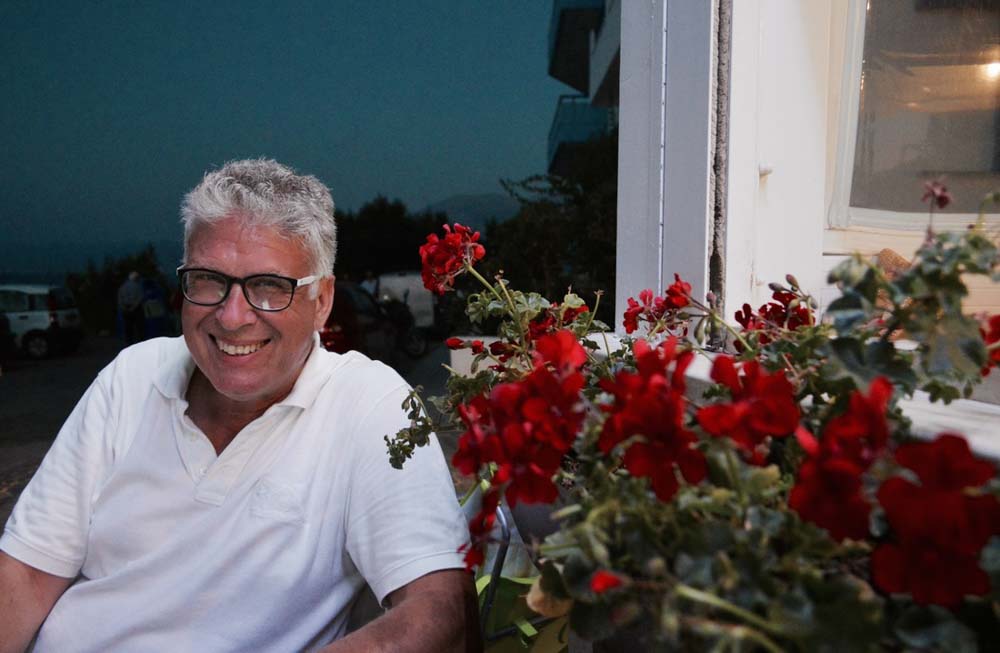
Awards & Accolades

Testimonials
Skip the group tours, leave your rental car at your hotel and ask Joseph to accompany you on a private tour to these great spots on Crete. We did "Mystic & Rustic Crete" and "Birth of Europe". If you are a first-time visitor he will suggest an itinerary and if you have special requests he will include those. Without Joseph we would not have known about the local culture or the history of the area nor would we have met and chatted with the local people... Read more
"A great tour and experience"We spent a full day with Joseph visiting Chania, Rethymnon and an olive oil farm and we had a great time. Crete is huge so you have to make choices unless you spend a week there. We arranged this tour with Joseph discussing our options and time. Joseph was very flexible with the itinerary allowing us to customize our tour and experience the highlights of some very nice towns. Joseph was very knowledgeable and answered every question. We would definitely use Joseph again to visit the other parts of Crete that we could not get to in this visit.
"Crete showed by Joseph is unique"The experience with Joseph showing us around Crete was absolutely unique. He is Greek and speak very good Hebrew. I don't think we would had seen and experienced half of what we did with him if we'd be on our own. He told us a lot of interesting stories about the Lassithi plateau and the area. His effortless ability to chat up with locals and involve us into conversation (with some translation, of course) was amazing. Funny enough these encounters led to further invitations (for a coffee and local drink - raki). Later on, he took us to an absolutely authentic tavern in a mountain village...
"The secrets never die" Das erste Mal haben wir Joseph Batis mit einer kleinen Gruppe in Chania in einer Fischtaverne kennengelernt. Er sprach Deutsch, Hebräisch, Englisch, Griechisch und soweit ich es richtig vernommen habe auch Spanisch. Ich habe die Gelegenheit genutzt ihn über unsere Ausflugsziele zu befragen. Seine Hinweise und seine Kenntnis haben uns in die Welt von Kreta innerhalb kurzer Zeit eingewiesen. Wir haben Joseph für einen Tag engagieren können um uns zu begleiten. Joseph hat über 30 Jahre in Deutschland gelebt. Seit Jahren führt er private Reisetouren auf Kreta...
יוסי מסיורים בכרתים ויוון, הוא מדריך.... מקצוען, בעל יידע נרחב איש לבבי וסימפטי, טיילנו בשנה שעברה... היה פשוט מדהים כיף... כיף... כיף... ממליץ בחום למי שמגיע לכרתים ויוון להשתמש בשרותיו המעולים. תודה יוסי על הסיורים ,האוכל, הטברנות, היה תענוג גדול ! ! ! מאתנו: אורי אילש, אלי גנט, יגאל גרינשטיין, נטלי גרינשטיין, אור גרינשטיין
כל מי שעתיד לנסוע לכרתים או ליוון, אני חייב להמליץ על חבר יקר, מדריך מעולה, אדם חביב ונעים הליכות שידריך אתכם בכרתים בעברית, אנגלית וגרמנית, מה שתבחרו.... ל- Joseph Batis אתר בו תוכלו להציץ במה שיש לו להציע לכם כולל תכנון הטיול ומלונות וכו' הציון שנתנו לו 10+ שווה מאוד... ביקרנו במקומות שבחיים לא הגענו אליהם בכרתים ! לחצו על השם וכנסו לאתר ! בהצלחה.

in heraklion
Beyond heraklion.

Crete Tourist Guide
Explore crete with christos.
Welcome to the enchanting island of Crete, where your journey takes on a personalized touch with Private Tours led by the knowledgeable and affable Christos Konstantinidis. Immerse yourself in the rich history, vibrant culture, and breathtaking landscapes of Crete, all while enjoying a tailor-made experience curated to your preferences. Christos, with his deep-rooted passion for the island, ensures that every tour becomes a unique exploration, unveiling hidden gems and weaving together the stories that make Crete a captivating destination. Whether you seek historical insights, culinary delights, or off-the-beaten-path adventures, embark on an unforgettable exploration of Crete with Christos Konstantinidis as your expert guide.
Choose the place and time
Write us about the place you want to visit during your stay in Crete.
Receive a Quote
Start exloring crete.
All is ready for an unforgetable day on the island of Crete
Popular Destinations of Crete
Knossos palace tour.
Heraklion
Spinalonga Island Tour
Chania old town tour, archaelogical museum of heraklion, the magic of crete.
Crete, Greece’s largest island, beckons with its diverse charm. From the captivating Minoan ruins of Knossos to the idyllic beaches like Elafonissi and the enchanting cities of Heraklion and Chania, Crete is a treasure trove of history and natural beauty. Olive groves, traditional villages, and the rugged beauty of the mountains add to the island’s allure. With a rich cultural tapestry, warm hospitality, and delectable cuisine, Crete invites visitors to savor the essence of the Mediterranean in a compact yet captivating escape.

TRIPS GALLERY
My Journeys
The island of crete, knossos palace, lassithi plateau, elafonisi beach, balos lagoon.
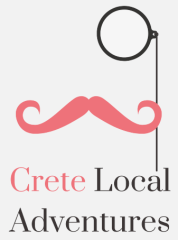
Crete Local Adventures
Tour crete with a local guide.
- Most Popular!
Chania Food Stories Tour
Experience the beauty and culture of Chania by joining this amazing small group walking tour through one of Greece’s most picture-perfect cities.
- Hour Glass 4 hours
- Tag Shared (max 12 people) and Private
- Clock 9.30AM
Other Tours
- Tag Private (min 2 people)
- Clock 7.30PM
PRIVATE Wines, Gods and Stargazing Tour
Dive into ancient Greek mythology and astronomy (along with some ancient old recipes) on your own private star-studded, food-fueled adventure!
- Hour Glass 6 hours
- Clock 8.30AM
PRIVATE Cretan Wild Views and Slow Food Tour
Explore traditional villages, admire epic sceneries, discover the Cretan culture, hear stories of the area’s thrilling past and try the best “slow food.”
- Hour Glass 8 hours
PRIVATE Cretan South Coast Adventure Tour
For adventure-seekers, you shouldn’t miss this exciting tour to the authentic, less-travelled part of the island, the South Coast of Chania.
Kalos orisate!
That means “welcome” in Greek — and our team is here to welcome you to our fascinating island of Crete.
Crete is the largest island in Greece, and a land of amazing beauty and diversity, rich with splendid beaches, ancient treasures, and modern cities but also traditional villages, high mountains, deep gorges, and a unique culture.
After having worked for years in the travel industry, our team of knowledgeable local guides are thrilled to be part of the Crete Local Adventures family, and our goal is to give you a peek at life on our island. Join us as we explore well-known landmarks as well as backstreets and off-the-beaten-track locations.

Top-Rated Tours of Crete
If you want to have a taste, of what the an authentic side and beauty of Crete and Cretan culture, truly is, you have to book a tour with Urban Adventures. Did the one in Chania old town and was mesmerized by the all the venues we visited and, everything we tasted was delicious and above all, Tsikoudia. Last, but not least, the Yanni's the guide, made us feel Cretan, by the end of the tour.
There are no words to express how much I love Crete Local Adventures! I've explored Crete under their guidance twice, and both times I discovered something completely new. People say that Crete is touristy - but I haven't experienced it at all. We went to all the local places, villages, met local producers, ate (a lot! :)) and everything was simply amazing! Olive oil tasting was my aha moment, as I've never done it before! I've fallen in love with Crete and will definitely come back!
What an amazing experience! We had the pleasure of visiting an amazing olive oil factory with stunning views, as well as a local cheese producer - so cool! The pinnacle was lunch in a tiny local village and the chance to do a hands on cooking class! Our guide John was so incredibly knowledgeable about Crete and the history of the island- as well as a plethora of facts about Greece! Such a pleasure and would highly recommend to anyone who wants to experience an authentic side of Crete.
We did the Cretan treasures tour last week and cannot recommend it enough to anyone looking to get away from the crowds and get a crash course on how many of the famous items from the island are produced (namely: cheese, olive oil, and honey). The trip finished in a small village (only 2-3 families in the area) where we got a small hands on cooking class and then ate delicious food (probably the best food from our trip) which was carefully prepared in a wood fired oven. Our tour guide was also incredibly hospitable and knowledgeable abt the local area and history of the area (and Greece in general).
The Heraklion Bites and Sights tour was AWESOME. We were lucky that other people who were supposed to join never showed up, so we got a super private treatment! Papatya was our guide, and she was EXCELLENT. Very interesting, knowledgeable, fun - a great person and guide. She shared her knowledge of Crete's capitol and brought us to amazing cafés, bistros and bakeries along the way. We especially loved the meze place where the tour ended (the food was fantastic). Based on her recommendations, we've bought local honey, olive oil and herbal tea to bring home - all of excellent quality. Do this tour when you are in Crete and do it right upon your arrival!
Amazing! Everyone and I mean EVERYONE, ages 14 - 83 LOVED the Street Stories of Chania Tour. Yannis was incredible. A wealth of knowledge on just about every topic, friendly, accommodating and engaging. An absolute must if you ever visit Chania.
We went on the Cretan South Coast Adventure Tour and had such an amazing time. Our guide, Yannis, was knowledgeable, thoughtful, and accommodating. This was my second timing using this company and I can’t recommend them enough. The selection of tours are unique and personal. You don’t feel like you are touring during Crete’s busy tour season, because this South Coast tour takes you to a relatively remote location for hiking and beach time. Even our lunch at Kafeneio sto Scholeio was a cool
This tour was absolutely wonderful. Our tour guide was very helpful and showed us around the small streets and hidden gems of Heraklion. Our guide was also very knowledgeable when it came to the history, culture, and tradition of local Crete, which was a fabulous immersive experience. If you have 3 hours to explore, eat, and drink in Heraklion, this tour is a must!
- Login or Register
Professionals
- Annual Meeting
- Grants & Awards
- Professional Directory
AIA Societies
- Find a Society
- Society Grants & Awards
- Society News
For the Public
- International Archaeology Day
- Interactive Digs
- National Lecture Program
- Events Calendar
- Site Preservation
- Archaeology Magazine
- Introduction to Archaeology
- Lesson Plans
- Skype a Scientist
- Become a Member
- Member Benefits
- Archaeology Archive
- Member Login
- Dollars at Work
- Ways to Give
AIA Tours: land
- Planning Stages
- Lecturers/Hosts
- Mailing List
- eNewsletter
Minoan Crete & the Cycladic Islands
Tour Dates: September 24-October 8, 2023 (15 days)
Tour Leader(s): Joanne Murphy ,
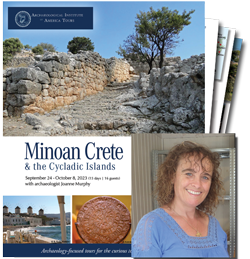
Download the full brochure for details
Small Group Tour, Limited to Just 16 guests!
For more information or to make reservations, please contact us at 800-748-6262 or email [email protected] . To reserve your space online, click here .
Step back in time to explore the island of Crete, center of the Minoan civilization during the Bronze Age, as well as the nearby Cycladic Islands of Santorini, Mykonos, and Delos. Marvel at the physical evidence of this first advanced civilization in Europe, which created palace complexes, stunning works of art, a unique writing system (called Linear A), and an extensive trade network. You will stay in comfortable, five-star hotels, perfect for exploring or just relaxing, with nine nights on Crete in the capital city of Heraklion and in the coastal town of Agios Nikolaos; plus two nights on whitewashed Santorini and two nights on chic Mykonos.
Tour Prices (13 nights)
Per person, double occupancy
14-16 participants $9,495 11-13 participants $9,895 Single Supplement $1,895
Single room supplement will be charged when requested or required (limited availability). With fewer than 11 participants, a small group surcharge may be added.
To reserve your space using the online form, click here.
For reservations or questions, please email us at [email protected] (and include your full name) or call us toll-free at (800) 748-6262 (toll: 603-756-2884).
Sitia, Crete - AIA Tour - Travel with Archaeological Institute of America to explore Minoan Crete and the Cycladic Islands
Phaistos - AIA Tours - Travel with Archaeological Institute of America to explore Minoan Crete and the Cycladic Islands
Phaistos disk, Heraklion Museum - AIA Tour - Phaistos - AIA Tours - Travel with Archaeological Institute of America to explore Minoan Crete and the Cycladic Islands
Lato - AIA Tours - Travel with Archaeological Institute of America to explore Minoan Crete and the Cycladic Islands
Knossos - AIA Tours - Travel with Archaeological Institute of America to explore Minoan Crete and the Cycladic Islands
Mykonos - AIA Tours - Travel with Archaeological Institute of America to explore Minoan Crete and the Cycladic Islands
Sunday, September 24, 2023: Depart home for Heraklion, Crete, Greece
Monday, September 25: Arrive Heraklion | Transfer to hotel | PM at leisure | Welcome reception
Tuesday, September 26: Heraklion: AM walking tour, PM Archaeological Museum | Welcome dinner
Wednesday, September 27: Phaistos | Agia Triada | Voroi: Museum of Cretan Ethnology | Heraklion
Thursday, September 28: Tylissos | Prinias Sanctuary | Gortyn | Heraklion
Friday, September 29: Knossos | Malia | Agios Nikolaos
Saturday, September 30: Archaeological Museum of Sitia | Zakros | Palaikastro | Toplou Monastery | Agios Nikolaos
Sunday, October 1: Panagia Kera | Lato | Kritsa | Agios Nikolaos
Monday, October 2: Gournia | Mochlos | Vasiliki | Agios Nikolaos
Tuesday, October 3: Areti Monastery | Spinalonga | Agios Nikolaos
Wednesday, October 4: Heraklion | Ferry to Santorini | PM at leisure
Thursday, October 5: Akrotiri | Fira: Museum of Prehistoric Thera
Friday, October 6: Ferry to Mykonos | PM at leisure
Saturday, October 7: Delos | Mykonos: PM at leisure | Farewell dinner
Sunday, October 8: Transfer to Mykonos Airport | Fly home
View Detailed Itinerary
(B)=Breakfast, (L)=Lunch, (R)=Reception, (D)=Dinner
Monday, September 25: Arrive Heraklion | Transfer to hotel | PM at leisure | Welcome reception Upon arrival at Heraklion’s Nikos Kazantzakis International Airport (HER), you are met for a private transfer to our hotel. Enjoy some time to relax and settle in. Gather this evening for a welcome reception with your lecturer. Dinner is on your own. Overnight at the 5-star Megaron Hotel (or similar) for four nights. (R)
Tuesday, September 26: Heraklion: AM walking tour, PM Archaeological Museum | Welcome dinner After an introductory lecture, we take a morning walking tour through Heraklion’s “old city,” surrounded by fortification walls initially built by the Arabs and later reinforced in the 15 th century by the Venetians. Along the way, enjoy a tasting of bougatsa (a Greek breakfast pastry) and Greek coffee. After lunch, tour the celebrated Heraklion Archaeological Museum, which houses the world’s finest collection of Minoan art and artifacts. Return to our hotel and gather this evening for a short walk to a local restaurant for our welcome dinner. (B,L,D)
Wednesday, September 27: Phaistos | Agia Triada | Voroi: Museum of Cretan Ethnology | Heraklion Begin the day with a visit to the ruins of the Minoan palace at Phaistos, a center of Minoan civilization that was destroyed in the 15 th century B.C. and one of four recognized major Minoan palaces in eastern Crete. (We will also visit the others—Knossos, Malia, and Zakros—over the next few days.) Continue on to the nearby Minoan “royal villa” of Agia Triada. After lunch we tour the Museum of Cretan Ethnology in Voroi to learn more about the people who have called this island home. Return to Heraklion, where we gather this evening for dinner at a local restaurant. (B,L,D)
Thursday, September 28: Tylissos | Prinias Sanctuary | Gortyn | Heraklion This morning we drive to the archaeological site at Tylissos, where we find the ruins of three luxurious Minoan houses decorated with frescoes and tablets, and outfitted with a water supply system that attests to the city’s importance at one time. We then continue on to the peak sanctuary of Prinias, whose 7 th -century B.C. Temple A is the earliest known sculpture-decorated building in ancient Greece. After lunch in Zaros we visit the famous Greco-Roman site of Gortyn, which became the dominant city in the region after Phaistos fell, later became Roman and was the first city on Crete to accept Christianity, and persisted into the 9 th century A.D. Return to our hotel in Heraklion, where the evening is at leisure. (B,L)
Friday, September 29: Knossos | Malia | Agios Nikolaos Set out this morning for a visit to the legendary, partially-reconstructed Minoan palace at Knossos, rich in imagination thanks not only to its associated myth of the Minotaur and labyrinth but also to the excavation and reconstruction efforts of Sir Arthur Evans in the early 20 th century. We drive east along Crete’s northern coast, stopping to explore the ruins of the Minoan palace at Malia, before stopping for lunch in the village of Limnes. Continue on to Agios Nikolaos and check-in to our hotel before enjoying dinner at a local restaurant. Overnight at the 5-star Wyndham Grand Crete Mirabello Bay hotel for five nights. (B,L,D)
Saturday, September 30: Archaeological Museum of Sitia | Zakros | Palaikastro | Toplou Monastery | Agios Nikolaos Drive to Sitia to explore its little-visited archaeological museum, whose most impressive artifacts are from the Minoan palace at Zakros and the Minoan city of Palaikastro, both of which we visit after the museum. End the day at the imposing, 15 th -century Toplou Monastery, which houses important frescoes, icons, and a museum of religious objects. Return to Agios Nikolaos for an evening at leisure. (B,L)
Sunday, October 1: Panagia Kera | Lato | Kritsa | Agios Nikolaos Start the day with a drive to Kritsa to visit the tiny Church of Panagia Kera, which houses Crete’s best-preserved Byzantine frescoes, some as old as the 13 th century. Next, explore the ancient, fortified, hilltop city of Lato, one of the best-preserved sites on Crete that postdates the Minoan era. In fact, this Dorian Greek site dates back to the 7 th century B.C., and was in use until approximately the 2 nd century A.D. Drive back to Kritsa for lunch and some free time to explore. Return to Agios Nikolaos, where the evening is at leisure. (B,L)
Monday, October 2: Gournia | Mochlos | Vasiliki | Agios Nikolaos This morning we drive to the well-excavated and -preserved Minoan town of Gournia, where we may best envision life in a Late Bronze Age (c. 1500 B.C.) town as we stroll cobbled streets among the ruins of some 50 houses, a small Minoan palace, and a cemetery. We then take a short boat ride to the island of Mochlos, where complex archaeological remains ranging from 3000 B.C. to the 10 th century A.D. have been found, including a Minoan town (c. 1700-1430 B.C.) and a Mycenaean village and cemetery (c. 1400-1250 B.C.). We return by boat to Crete proper and, after lunch, we explore the ruins of Vasiliki, one of the first Minoan settlements with town planning. Return to Agios Nikolaos, where we take a walking tour and then have dinner at a local restaurant. (B,L,D)
Tuesday, October 3: Areti Monastery | Spinalonga | Agios Nikolaos Begin the day with a visit to Areti Monastery, which was established in the 16 th century and re-established and restored in the 20 th century. Afterward, we take a short boat ride from Plaka to the picturesque island of Spinalonga, which is home to a 16 th -century Venetian fortress and was a leper colony for the first half of the 20 th century. Return by boat to Plaka, where we have some time on our own to explore. We return to Agios Nikolaos for the balance of the day at leisure. (B,L)
Wednesday, October 4: Heraklion | Ferry to Santorini | PM at leisure This morning we return to Heraklion to catch a high-speed ferry to Santorini (a.k.a. Thera), one of the world’s most breathtaking islands, dotted with whitewashed houses and churches perched on cliffs nearly 1,000 feet above the sea and its huge, drowned volcanic crater (caldera). After arriving at our hotel on the outskirts of the capital, Fira, lunch and the afternoon are at leisure; explore independently the nearby town center’s narrow cobbled streets lined with shops and/or enjoy our hotel’s amenities and views. We dine together at a local restaurant this evening. Overnight at the 5-star Orama Hotel & Spa for two nights . (B,D)
Thursday, October 5: Akrotiri | Fira: Museum of Prehistoric Thera Spend the morning exploring Santorini’s “Pompeii,” the haunting Minoan town of Akrotiri, preserved for millennia under volcanic ash, now excavated and protected with a roof. Navigate the town via wooden walkways among three-storey buildings and traces of life from before the eruption. Drive to Fira for lunch and to explore the superb Museum of Prehistoric Thera, which displays striking frescoes and various artifacts from Akrotiri. The balance of the day is at leisure to enjoy Fira and/or our hotel’s amenities. (B,L)
Friday, October 6: Ferry to Mykonos | PM at leisure After a relaxed morning (pending the ferry schedule) at our hotel, we take a high-speed ferry from Santorini to the island of Mykonos. Our hotel is located in the center of the island’s capital of Chora. The balance of the day is at leisure to enjoy our hotel’s amenities and/or explore independently Chora’s many upscale shops, art galleries, and seaside cafés. Overnight at the 5-star Semeli Hotel for two nights . (B)
Saturday, October 7: Delos | Mykonos: PM at leisure | Farewell dinner Take a short ferry ride to the nearby sacred island of Delos, legendary birthplace of the twin gods Apollo and Artemis and today a UNESCO World Heritage Site. Delos was considered the most sacred island in the ancient Aegean, and the entire, albeit small, island is an archaeological site. After a thorough walk around the ruins of the sanctuary of Apollo and the town, as well as a visit to the small site museum, we return to Mykonos by ferry. Enjoy lunch and the afternoon at leisure. In the evening, we gather one last time for a farewell dinner. (B,D)
Sunday, October 8: Transfer to Mykonos Airport | Fly home You are met at the hotel for a private transfer to Mykonos Airport (JMK) for your flights homeward. (B)
Reservation Form and Terms and Conditions
Download the full brochure
For reservations or questions, please email us at [email protected] (and include your full name) or call us toll-free at (800) 748-6262 (toll: 603-756-2884). To reserve your space using the online form, click here.
Archaeological Institute of America
Back to top.
Copyright © 2024, Archaeological Institute of America. All Rights Reserved. | Privacy Policy | Yelling Mule - Boston Web Design
Crete history; a guide for small group tours
Crete, the largest of the Greek islands, stands as the southernmost border of Greece. Its position sees it as acting as something of a communication bridge between the African continent and Europe.
30 May 20 · 23 mins read

Crete history; a guide for escorted small group tours.
Crete, the largest Greek island, stands as the southernmost border of Greece . Its position sees it as acting as something of a communication bridge between the African continent and Europe. Today much of this ancient Greek island lies virtually untouched with an imposing collection of mountains and a rugged gorge or two, halting many of the planned efforts to explore the isolated regions of Crete.
Since 1983 Odyssey Traveller has been offering guided small group tours to mature and senior travellers to almost 200 destinations around the world. Our escorted small group tour of Crete remains a popular choice as destination for couples and solo travellers seeking an introduction to the place that was the crossroads for Africa and Europe. Crete‘s Minoan civilisation was the original supplier of luxury goods to the Ancient Greeks. It tended to be that whoever controlled Crete controlled the Mediterranean sea and the associated trade from Alexandria and the Black Sea . This article seeks to set the historical scene for our escorted small group tour of Crete or Greece tour for you and your tour director. To understand and appreciate in detail the fascinating history that has evolved in Crete over the centuries, your Crete tour should get beyond a regular escorted tour visiting a Greek island on a day trip such as Mykonos, visiting the old town, wine tasting and a visit to olive grove. What Odyssey seeks to offer on its escorted small group tour of Crete is to learn and understand the history and the role of the place in the Mediterranean sea.
For Odyssey Traveller our escorted small group tour of Crete for the senior traveller acknowledges the importance of these places such as Mykonos and the stunning scenery of the turquoise seas, the sandy beaches and culinary delights in the itinerary. However, this guided tour seeks to take the traveller on a small group tour of Crete that also provides an understanding of the historical context and important contribution key events have had in shaping the nation through a collection of day tour activities to the archaeological site (s) of im portance as well exploring on a guided tour of the relevant sections of the archaeological museum to put the ancient ruins visited with your tour manager into historic context as you travel round the fascinating Greek island, that is Crete that held the key for such a long period of time in the strategic control of the Mediterranean sea.
Perhaps due to the often daunting, inviolate landforms, time immemorial has seen Crete as the centre for an ingrained and complex mythology. Examine of any of the Greek mythology revolving around Crete and you will begin to experience and feel the power that Crete had already generated back deep in prehistoric times. This mythological story about Cronus the king of the gods is an example.
The king among the gods, Cronus
The king among the gods, Cronus was supposedly all-powerful but was riven with the terrifying human traits of jealousy and insecurity. He continually worried that there was something or someone waiting to knock him from his throne. Rather than risk having any of his offspring grow and threaten his position, he killed all of children at birth. His wife, Rhea, became tired of carrying children only to remain childless because of her husband’s fears. Realising she was once again pregnant, she retreated deep inside one of Crete’s many caves, the Dictean Cave, to protect her soon-to-be born child.
Soon after the birth, for added security of the child-god, he was moved to the Ida cave on Mt Psiloritis, the highest mountain on the island. Here under the protection of the nymph Amalthia, he was raised with wild bee honey and goat milk both still abundant in much of Crete today. When Zeus was grown and felt ready he faced his cruel father, triumphing and banishing the old king Cronus.
Taking his rightful place as ruler of the gods on Mt Olympus (mainland Greece), Zeus married the goddess Hera, although the myths tell us he availed himself of others among the goddesses. Some may point to the demands of goddesses as the basis for his change of tack but whatever the reason Zeus began to stray with women of a more mortal nature. His legendary love affair with the princess Europa sees the god kidnapping her and spiriting her back to his birthplace Cretewhere he fathered three children with her. Soon the young god tired of the princess so he gifted her and the three children to the king of Crete, Asterion. One of these children was Minos, the future and greatest king of Crete.
The myths surrounding Minos continue with his construction of a lavish palace and his famed Labyrinth both designed by the architect Daedalus. The labyrinth supposedly enclosed the Minotaur with the head of a bull and the body of a man. It was to the Minotaur that the Athenians on mainland Greece paid an annual blood tribute in the form of seven maidens and seven youths. The feeding of the Minotaur continued until Theseus, with the help of Ariadne, King Minos’s daughter, navigated the Labyrinth and slew the monster thus putting paid to the tribute.
The beginning of the term Minoan.
The origin of the term Minoan, when used for speaking of the greatest civilisation in the lengthy history of Crete, is debated but it is most often connected to the British archaeologist Arthur Evans. Evans was the excavator of the site of the palace at Knossos and when his excavation uncovered a labyrinth–like structure he immediately drew parallels to the ancient myths bestowing the term Minoan upon his discovery.
The recent discovery of stone tools on a archaeological site on Crete push back the dating of human occupation this Greek island to over 130,000 years ago. Some claim that the limited spread of the finds and their paucity indicate that any stay on the island at that time was brief and then by small numbers of people only. The exciting possibility of a very early sea voyage from Africa has been raised by this discovery.
Based on archaeological site work at various places around Crete, other than the very early stone tools and their implications, it appears likely that Crete was continually inhabited from sometime in the 7 th millennium BCE. Excavations at the archaeological site at the very deepest levels at the site of Knossos have yielded evidence of occupation on the site from this very early Neolithic period predating even the production of ceramics for which the Minoans where famous for. Without the tell-tale information provided by pottery styles and their changes over time, dating of these very early habitation sites relies mainly on radio-carbon estimates gathered from organic samples or charcoal.
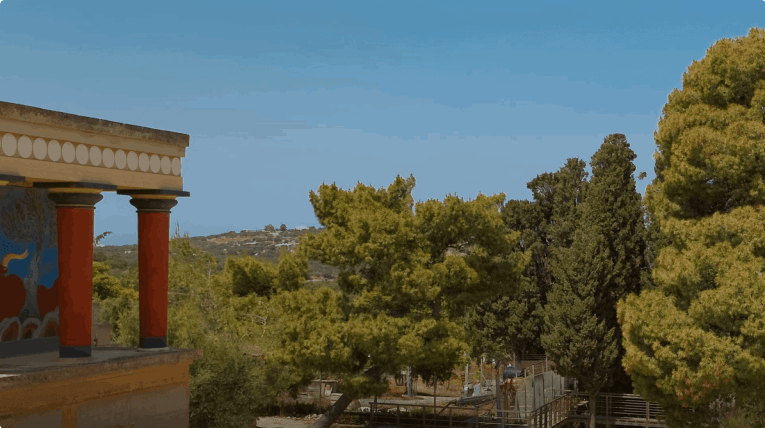
The Minoans
Most would say that one of the prerequisites for the development of a civilisation would be wealth in one form or another. Crete, an island in the middle of the Eastern Mediterranean and seemingly isolated from other of the great civilisations, was able to build wealth by the development of efficient seafaring. Using the lush Cretan forests, expert shipbuilding methods were brought into play allowing success upon success in the region’s commerce. Crete’s position would have also contributed to this as a more than suitable waypoint for sea-borne trading excursions.
Until now, a dearth of written records for Cretan sites and the use of the as yet to be deciphered script Linear A has meant the early Cretan chronology is based on comparisons to developments and dating elsewhere, such as in Egypt and the ancient Near East. The fact that even in these ‘darker ages’ extensive trade networks were already in operation to and from Crete meaning imported goods and styles are found throughout the island on archaeological site digs and in the archaeological museum on the island. This escorted tour will travel often as a day trip to these ancient ruins as part of the itinerary managed by the tour director.
Without a doubt, the most prosperous and well-known period in the history of Crete is the Bronze Age and its Minoancivilisations, likely beginning sometime around 3000BCE. Most early scholars working with the Minoan culture distinguished four main phases based upon the destruction and founding of what they term Minoan palaces and the associated pottery typologies. More recently such clear divisions and dating have proved unpopular with archaeologists. Such absolutes, they believe, ignore too much of cultural differences and possible inequalities, placing undue reliance on similarities. Having said that, the provision of a more digestible overview of the history of Crete for the Bronze Age is best approached by reference to these phases.
The Pre-Palace Period (3000-2000BCE)
During this 3 rd millennium BCE, the Minoan civilisation was in its infancy. However, the transition from Neolithic to Early Minoan seems clearly marked by not only an increase in commerce but also the likelihood of the arrival of immigrants from areas such as Asia Minor, Egypt and the Ionian islands to the north of Crete. Although the sources of metal on the island are very scarce, the newcomers appear to have introduced methods of working with copper, and later, other metals. Success in this would have prompted further population increase by way of migration. In addition, as settlements developed on Crete and new ideas were introduced agricultural production would have also increased bringing about further population increases and also a surplus for trade.
During the early part of this era, although metal-working was being undertaken, the production of everyday utensils and materials involved the use of clay or stone. Pottery from this period was still handmade, the technology of the pottery wheel yet to reach the island. However, perhaps because of the extended leisure time afforded by surplus production, the ceramics produced begin to exhibit new innovative shapes and decoration. Typical of the period’s typology are vessels covered in a lighter-slipped background, then finished with bright red or dark brown striping, clearly reflecting the available basic pigments.
As the period progresses, archaeological site investigations have revealed a rapid growth in shipping activities to ferrymaterials around the island and as part of trade with the ionian islands and Mainland Greece, reflected in the increase of imported wares found on sites. Notable around this time is the appearance of tin to alloy with copper for the new metal bronze. In addition, there was an apparent increase in husbandry and fishing. Harking back to much earlier times, the burial of the deceased in caves continues but there also now appears circular vaulted tombs. Examples of tombs dating to this time can be seen in Messara, Agia Photia and Mochlos, with the new style tombs utilising cliff faces for structural support. Particular strategic settlements developed and expanded around this time as well as the advent of new luxury materials such as gemstones and ivory.
At approximately the same time, evidence of contact to the far north comes in the form of what is believed to be an actual Minoan colony on the island of Kythera in the Peloponnese . While on Crete itself, archaeological site excavations of these ancient ruins have revealed settlements that now have separate areas for cooking, sleeping, work and for storage. At the site of Vaskiliki, walls of some buildings show remains of a plaster and reddish paint while still others are arranged around paved courtyards – clearly a step towards later developments seen elsewhere.
The Proto-Palace Period (2000-1700BCE)
It is now 2000BCE and the Minoans are at a point where they are exporting great quantities of timber and other products of their island. Their craftmanship has continued to move on apace with invention and innovation allowing the Minoans to output an abundance excellent ceramics, jewellery, tools and agricultural products that they ferry to mainland Greeceand south to Egypt. The surplus from these further increased the Minoans’ position within the trading sphere of the Mediterranean and in turn increased their wealth and status.
The first opulent palaces of the Minoans begin to appear at Knossos, Phaestos, Malia and Zakros. Such buildings appear to indicate that there was a wish, or perhaps a need, to move power bases more towards the centre of the island. It has been argued that such major construction activity clearly shows that within the Minoan society at that time, there was a stronger sense of order and the development of something of a more hierarchical structure, hence the terminology of palace. Each of the sites chosen for the palaces are obviously strategic with Knossos situated well above the surrounding plan with a view towards Heraklion. Zakros was positioned to take advantage of its harbour and the sea for trading towards the east while both Phaistos and Malia have commanding views over fertile agricultural plains. Interestingly, all of the chosen sites, Knossos in particular, have traces of much earlier settlements with some estimates of area of the Neolithic settlement at Knossos approaching many thousands of square metres.
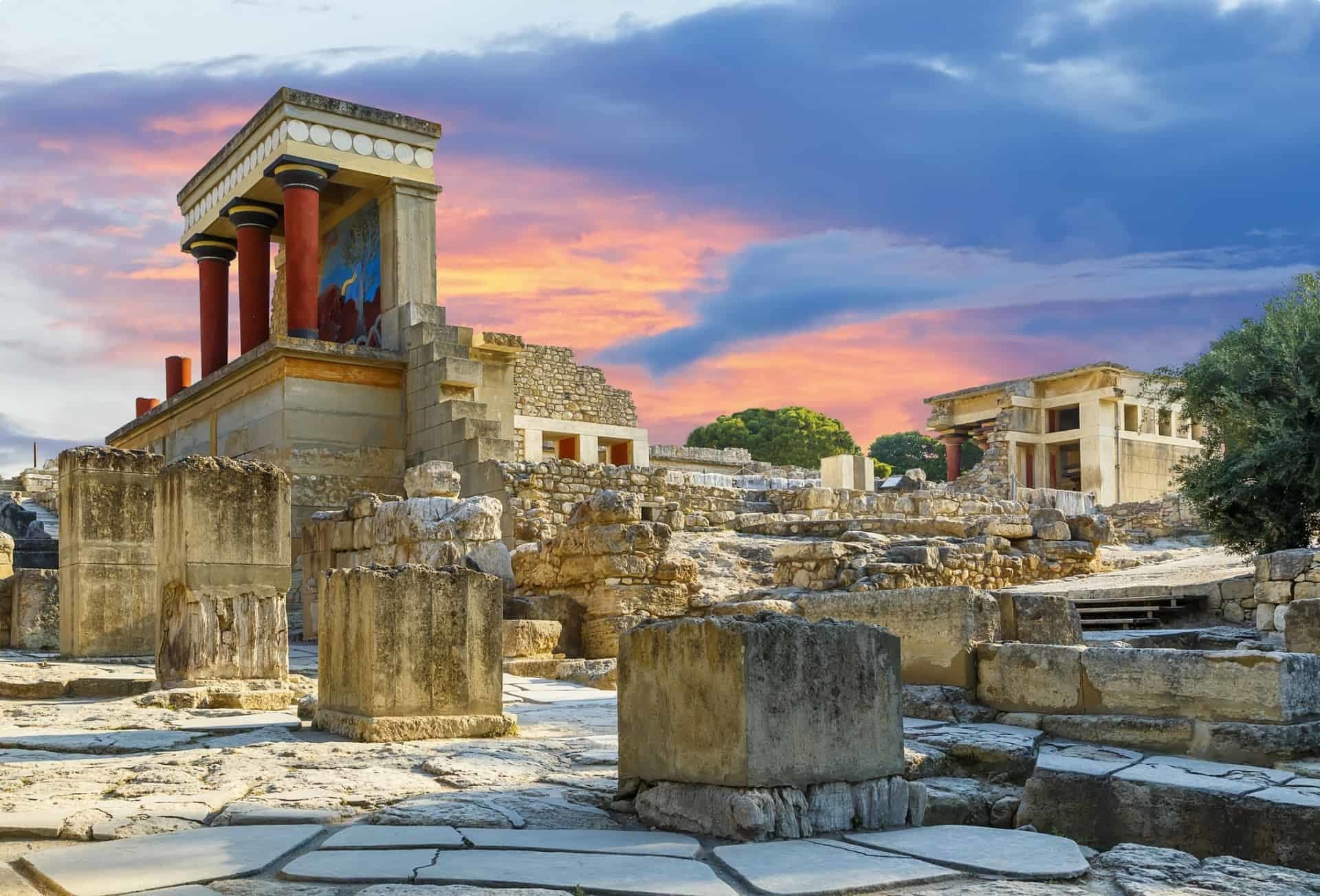
Also during this period of the construction of palaces and reorganisation, evidence for developed religious belief systems becomes prominent with mountaintop sanctuaries and cave-based worship for chosen cults. Archaeological siteexcavations in caves found nearby many of the Minoan settlements have uncovered vast quantities of ceramics that appear to have been used for some form of votive offering. The characteristic Kamares pottery with its incised geometric or floral designs, first appeared at this time, its name derived from the Kamares cave overlooking the palace at Phaistos. Did the Minoans feel it was necessary to thank someone or something for their comfort and successes?
Also indicative of the growing wealth during this period are the appearance of large urban villas in the hinterland of the palaces and their settlements. The idea behind the construction of the famous labyrinth and its fearsome monitor, the Minotaur, is believed by some to have stemmed from a need to protect either or both the wealth and the produce of the settlements. However the absence of any obvious fortifications on the sites point towards a decided lack of external threat and a reasonable stability within. A more efficient type of wheel for pottery manufacture also came into use during this era with two distinctive typologies in place. The two types are a more utilitarian and heavier vessel, with a variety of earth-coloured pigments used for decoration, and the delicate thinner-walled ceramics, used more for ceremony and for export.
The palaces, their settlements and the urban villas all have drainage systems that would have ensured comfort. Also the establishment of trading outposts on other greek island such as the Ionian islands increased as would be expected with the steep upturn of inter-island trading. Coming into use also at this time was a hieroglyphic writing, with the Phaistos Disc providing so far, a unique example of this manner of record. The disc has resisted any attempt to decipher or unravel its meaning but it can been seen in the Heraklion Archaeological Museum if you would like a chance to try your linguistic skill to add further to the history of Crete.
Archaeologists have discovered that these ancient ruins where settlements around the palaces were established Minoan civilisation had sophisticated sanitation systems and exhibit a highly developed system of urban planning. As you travelaround Crete on a Odyssey small group tour your tour guide will take the time on the walking tour of these ancient Minoan civilisation sites to point these features out in these old towns and ancient ruins. Now although, for the most part, the economy was agriculturally based, trade contributed greatly. Outposts on other Ionian islands and in the coastal regions of mainland Greece Anatolia, Egypt were established.
Growth for the Minoans continues unabated throughout this period but it comes to an abrupt end marked by what appears to have been a violent earthquake around 1700BCE.
The New-Palace Period (1700-1450BCE)
The earthquake, probably related to a volcanic eruption of Thira, brought with it destruction of Minoan palaces and their settlements. However, the Minoan civilisation after a relatively short interval of time, rebuilding had taken place on an even grander scale. All of the larger towns and settlements of Minoan Crete displayed constructions of unprecedented beauty and design and what archaeologists identify through their work on the archaeological site relevant to the Minoans as a being a more adapted and functional style of architecture.
The four main palaces at Knossos, Phaistos, Zakros and Malia, as well as a new palace at Kydonia (modern-day Chania) now had luxurious apartments, likely for the ruler and his family. Other features included shrines, storerooms, workshops, baths, paved courtyards with staircases leading to upper floors. Knossos provides the visitor with examples of all of these features, many reconstructed by Arthur Evans during his archaeological site excavations there in the late 19thcentury. While you visit keep in mind that many scholars level criticism at Evans for talking too much licence with his reconstructive work. If you compare the palace at Knossos to others you may well be of the same opinion.
The Minoan civilisation apparently was centred at Knossos reaching its peak in the 16 th century BCE The palaces functioned as both social and religious focal points although the country estate or villa continued to be popular likely housing the well-off merchant class. Crete traded widely in the eastern Mediterranean and beyond, with the Minoans producing pottery, jewellery, and both intricate and more robust metalwork. At home their artisans produced sculpture and created vibrant frescoes while olive oil extracted from the olive grove, and wine and perfume was manufactured for both local consumption and trading abroad. It can be assumed that the majority of the urban populations were involved in the production and exchange systems of the settlements. There would also have been a number of groups working as potters, farmers and also as weavers. Excavations point to the largest commercial centres being located at Phaistos, Agia Triada, Malia and possibly also at the port town of Amnissos.
The thriving Minoan communities spread influence throughout the colonies and on to mainland Greece and by about 1500 BCE certain of the Greek mainlanders from Mycenae appear to have been taking a major role in the Minoan dealings. It was these Mycenaeans who introduced writing in the form of Linear B to Crete with this then used for record keeping.
Unfortunately, around 1450 BCE the Minoan civilisation and culture experienced another devastating blow when it is believed the volcano at Thira once more erupted. The subsequent tsunamis and fires laid waste to most of what the Minoans had so carefully built up over the preceding two and a half centuries. Most of the Minoan palaces including those at Malia, Phaestos, Tylissos and Ayia Triade were completely destroyed although some of the Knossos palace survived somewhat intact. With the base of the Minoans now virtually at an end the power vacuum created allowed the Mycenaeans to step in to take control.
The Post Palace Period (1450-1100 BCE)
A few decades prior to the second devastating Thira eruption, mainland Greece had been invaded by barbarian tribes from their north. The Greek legends refer to these people as Achaeans, Homer’s ‘long-haired Acheans’, and there is the possibility that these people infiltrated or mixed with the Mycenaeans and in turn their dealing with the Minoans. From soon after the eruption, archaeological site evidence indicates a marked cultural shift on Crete and this is reflected in numerous sources. However, certain of the evidence found on ceramics and other artefacts may also point to a successful and peaceful coexistence until around 1300 BCE. Crete was hit by yet another strong earthquake that eradicated the last remains of the Minoan civilization as the once sumptuous palace at Knossos was completely and utterly levelled.
Sources dating to the 11 th century BCE tell stories of powerful Cretan fleets prowling the eastern Mediterranean so it could be assumed that the seafaring culture established by the Minoans continued at least up until this time, although perhaps under different command. It seems that from the downfall of the Minoans, Crete began to live under a long line of successive rulers or masters.
Proto-Geometric Period (1100-900 BCE )
With the final collapse of the Mycenaeans came the end of the Bronze Age in the Aegean. This appears to coincide with an extended period of economic problems impacting negatively upon the culture of the mainland. This period of depression is commonly known as the Dark Age and Greece was left vulnerable. Once Greece was overrun, the remainder of the invaders moved on to Crete to bring new customs not before seen in the island. Cremation was one such custom, and their manufacturing styles amalgamated a debased mix of both Minoan and Mycenaean. A marked decrease in the qualities of both ceramic and metalwork is noticeable in the record and artefacts in the archaeological museum on Crete. One positive aspect though was that the technology for the working of iron was to the island.
It did not take long before ancient Crete began to emerge from the dark and sometime around the middle of the 11 th century BCE the ceramic typologies excavated show technical advancement. The pottery bears the hallmarks of production on a faster wheel. This would indicate either the development of a completely new cultural tradition or at the very least a revival of the past. This pottery is classed as Proto-Geometric and is referred to as indicating transition out of the preceding period into the next.
The Geometric & Archaic Period (900-500 BCE)
Coming out of the Dark Ages brought a rapid expansion of Greek cities and colonies. Described by some as the time of Greece’s intellectual and structural revolution, it was the time when Greek classical philosophy and literature commenced. Likely under the influence of this, and with Crete playing a supporting role in Greece’s revival, Crete’s population rapidly increased with the island drawn closer to the embrace of mainland Greece. This allowed a further influx of a group know as the Dorians. The Dorians’ impact is most obvious in western Crete. Under the direction of the Dorian new towns were established in Western Crete, at sites such as Kydonia (Chania), Phalasarna and Polyrennia. Over time, for reasons unknown, many of the cities in Western Crete became deserted and it is thought their populations headed into the more mountainous areas. This move could have been for security or perhaps to avoid some unexpected climatic or environmental changes such as a sea-level rise.
Dating to this period is the ‘Law Code of Gortys’ found inscribed on twelve columns at the excavation site of Gortys. In its entirety it outlines the basic, and certain intricate structures governing society at that time. It includes laws concerning family relationships, inheritance and property. Additionally, many of the artefacts unearthed from archaeological siteexcavations from this particular period on Crete show that both Dorian and Asia Minor influences dominated art and culture of the time. There are even some scholars today who posit the theory that Crete actually functioned as the cultural and artistic centre of mainland Greece during the 7 th century BCE and possibly somewhat later as Greece and the Mediterranean world moved towards their Classical era.
The Classical & Hellenistic Periods (500-67BCE)
For reasons unknown or undisclosed by the archaeological and archival sources in the Archaeological museum, the 6 th century BCE was witness to pitched and constant battles between the established Cretan cities and towns. Teaming this with further invasions from Asia Minor, mainland Greece and further afield, all which appeared to be challenging the might and power of Knossos, you would expect the problems to have significant effect. Strangely though, considering the circumstances, Crete outwardly suffered little from these disputes.
In what appeared to be a veiled attempt to garner protection and assistance, a group of the Cretan city-states looked to the Macedonian king, Philip (Alexander the Great’s father) while also soliciting help from Mithridates, the king of Pontus, a powerful kingdom bordering the Black Sea. Perhaps as a result of reluctance on the part of those entreated to assist, squabbles continued to escalate between the Cretan cities and their power-seeking rulers. The resultant upheaval and chaos on the island did not go unnoticed by seaborne groups who were able to take advantage of the disputes and lack of cohesion to ferry armed battalions to raid Crete.
One of the best organised of these pirate scourges were sailing from Cilicia in the north-eastern corner of the Mediterranean. In fact, the name Cicilian became synonymous for piracy. It was this particular group who, with the help of some of the Cretans, launched an attack on the Roman city of Ostia from their now well-established base in Crete. As a result of this successful attack at the heart of Rome, Pompey the Great was given free reign to clear the region of pirates under the newly-passed law, the Lex Gabina .
The Romans were further able to take advantage of this situation intervening in the disrupted and fragmented political scene then operating throughout Crete. By 67 BCE the Romans had all but completed their conquest of Crete, in a sense linking it to Cyrenaica, a province of North Arica.
The Roman Period (67 BCE- 330 CE)
As throughout the lengthy history of Crete, that your tour director and local tour guide share with you on your escorted tour, the strategic importance of the island was understood by the conquering Romans. Once under Roman control it helped Rome with further expansion towards the east. Although Rome came up against sustained resistance from many Cretans the island was finally subdued and the population, for the most part settled into a relatively peaceful existence. Crete took on the atmosphere of well-protected cultural pocket of the Eastern Roman Empire (Byzantine). The capital for much of the Byzantium era was Gortys with stadiums, baths and theatres constructed for the swelling population. Knossos, Phaestos and Kydonia (Chania) were other important cities during this time and still today the remnants of sculpture, mosaics along with splendid private and public architecture can be visited as part of your trip itinerary of Crete.
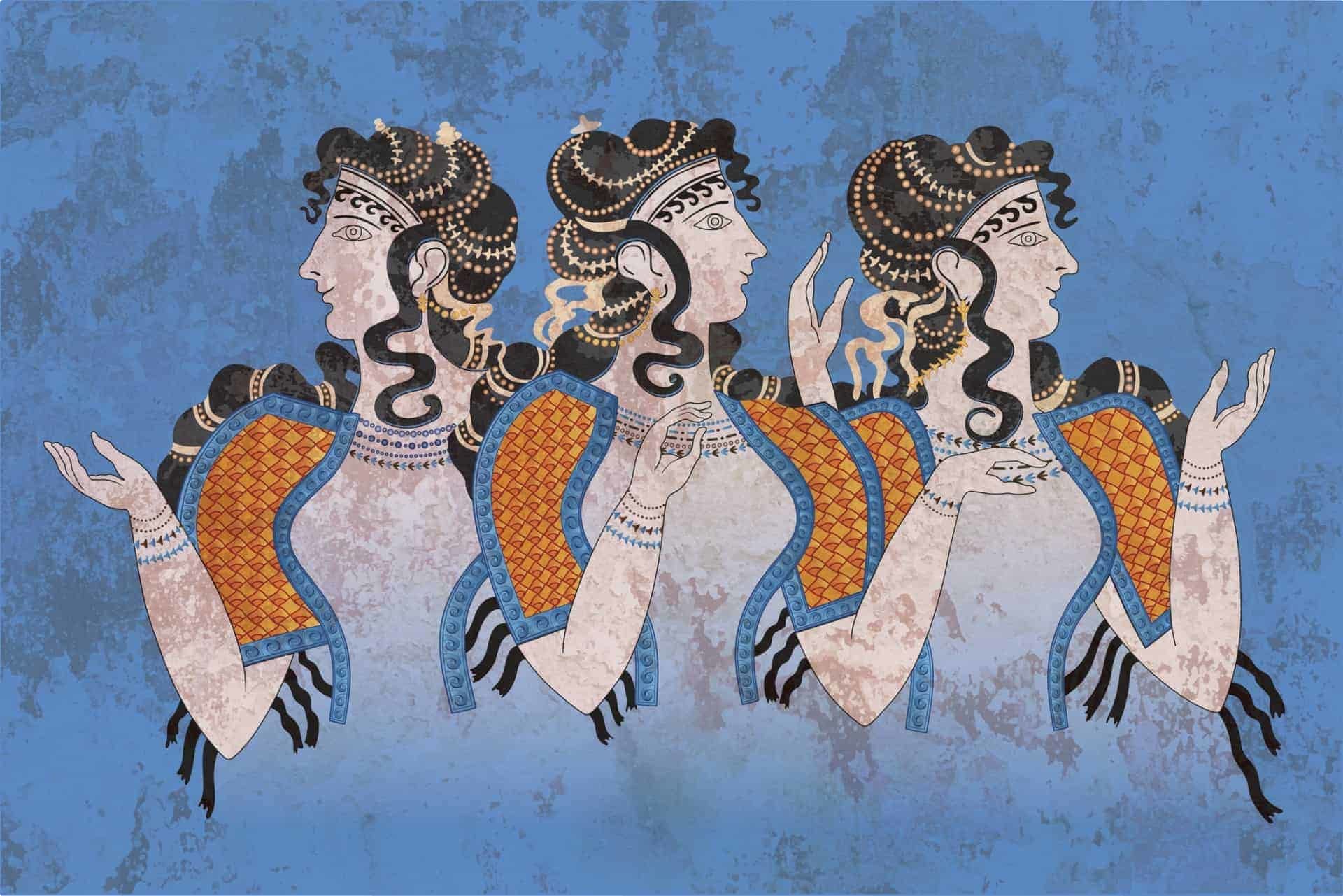
Although there were intermittent raids carried out on the island by groups such as the Goths at the close of the 3 rd century CE, Crete, overall, remained calm and prosperous under Roman rule. In general, the Romans allowed the Cretans their freedom, freedom to follow much of their own culture and customs as they tended the olive grove, manufactured fine pottery products and produced metalwork for export.
The Early Byzantine Period(330-824 CE)
Upon becoming emperor, Constantine the Great, relocated his capital to the city of Byzantium, changing its name to Constantinople (Istanbul). Not only did this recognise the economic growth and importance of the Eastern Empire but also established Christianity as the official religion.
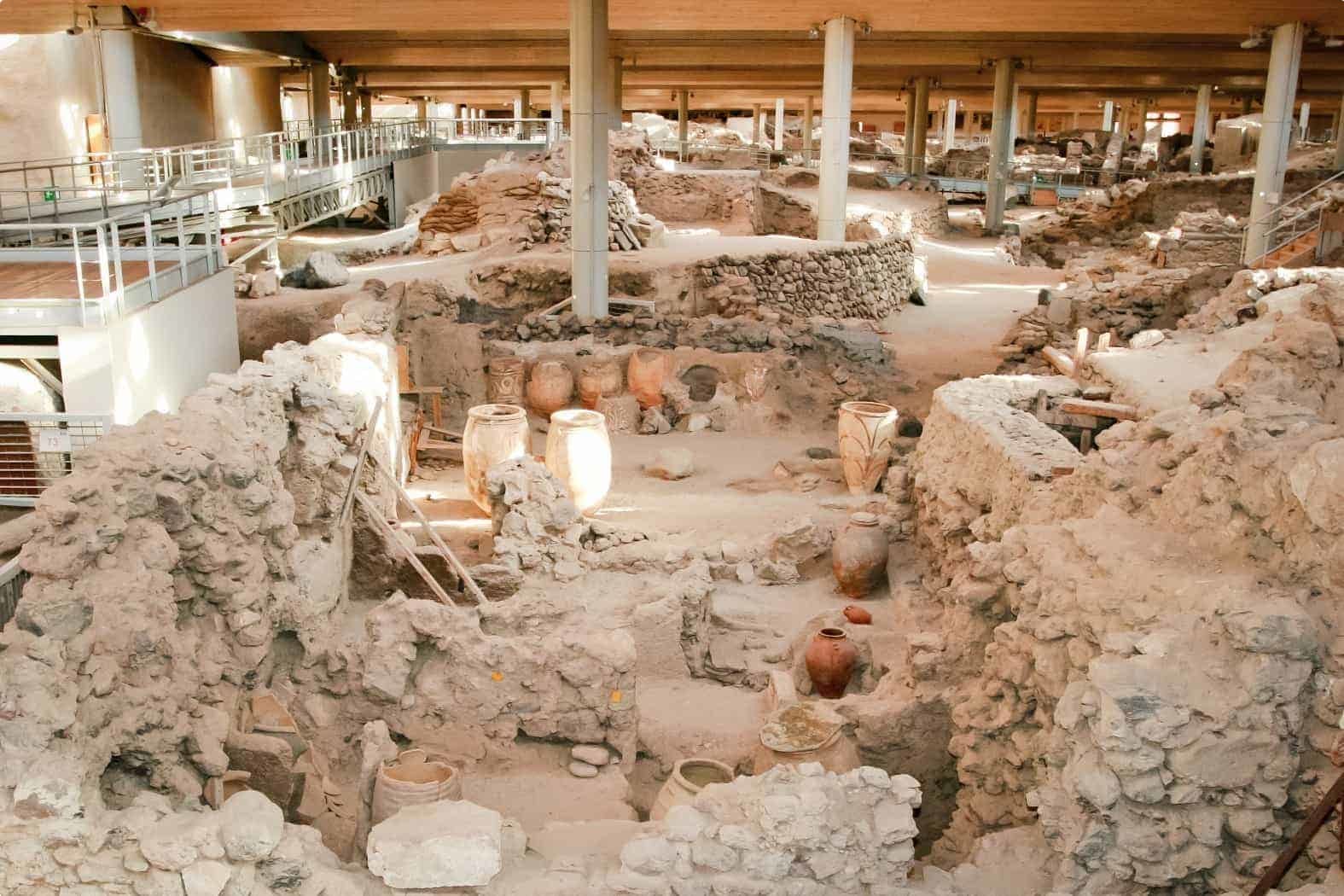
Christianity reached Crete during this early stage, with several of the largest churches on the island being constructed during this era in the established old town of the island and much of the population coming to follow the newly introduced religion. Once again, Crete remained stable and well-organised functioning as something of an outpost for the Empire for almost five centuries. Unfortunately, this was violently disrupted in 824CE with organised raids carried out by Iberian Muslims enabling them to gain control over many parts of Crete and setting up scattered bases over the island.
Under Arab Rule (824-961 CE)
After the capture of the island by the Arabs, Candia (Heraklion) served as the capital of the conquered island and emirate. It was fortified by walls and by a deep trench or gorge that surrounded the city, named by the Muslims, Rabdh el Khandac , literally translated as a trenched fortress. The subsequent names of Chandakas, during the later Byzantine Period and Candia of the Venetian period were derived from the Arabic term. The coastal bases spread over the island allowed Muslim pirates to continue their raids through much of the Aegean. The capture of the island had in fact altered the balance of power in the Eastern Mediterranean with any naval supremacy threatened constantly by the Muslim raiders. Crete, by virtue of its position and landform, offered the perfect haven for the Arab pirates who soon had transformed Crete into the largest market for slaves anywhere in the region.
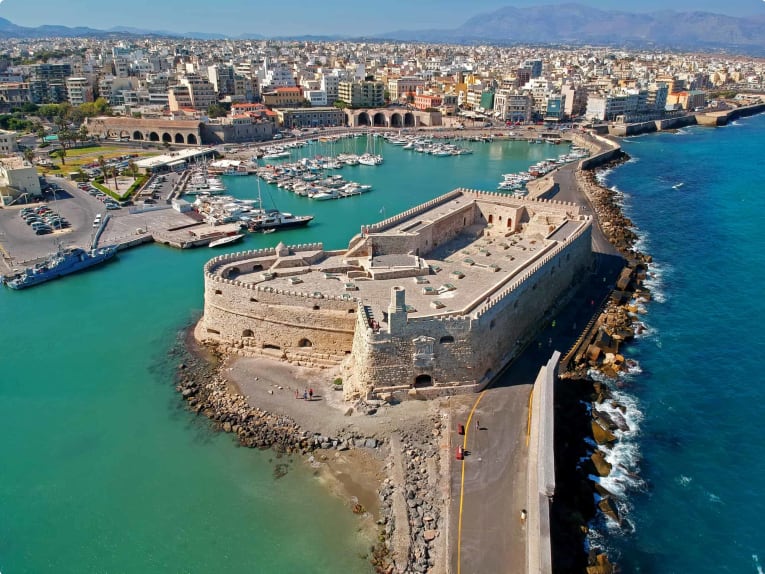
In the hands of the Arabs, Crete continued to reap the harvest from not only the piracy but also from the increased trade flowing through the island. The Byzantines realised the situation was far from satisfactory having lost this valuable outpost to the Muslims. A number of unsuccessful campaigns were launched to retake the island with one final attempt made in 961CE. In the autumn of the previous year, a Byzantine force, led by General Nikiphoros Phokas, laid siege to the Arab capital, finally succeeding when the city surrendered the following spring. The remainder of Crete rapidly capitulated once the capital stronghold had fallen with the island then again under Constantinople. The Byzantines and their retaking of Crete had many advantages not the least being that could use the island as a stepping off point to ferrymaterials for campaigns into North Africa and beyond.
Crete then remained relatively safe and secure in the hands of the Christian Byzantines until around the time of the Fourth Crusade. This crusade, carried out at the very beginning of the 13 th century CE began having the widely promoted objective of freeing Jerusalem from the Muslim yoke. Unfortunately, things failed to go as planned and the Crusaders turned to sack the great city of Constantinople. The destruction of the walled city brought about the decline and fragmentation of the Byzantine Empire. Later in the aftermath of the fateful Crusade, Crete was sold to the growing Venetian trading enterprise. However, before the island could be consolidated, Venice’s rivals, the Genoese, took the opportunity to seize control. It was not until some eight years later that Venice was able to wrest control from Genoa to reorganise Crete as Venetian colony known as the Kingdom of Candia.
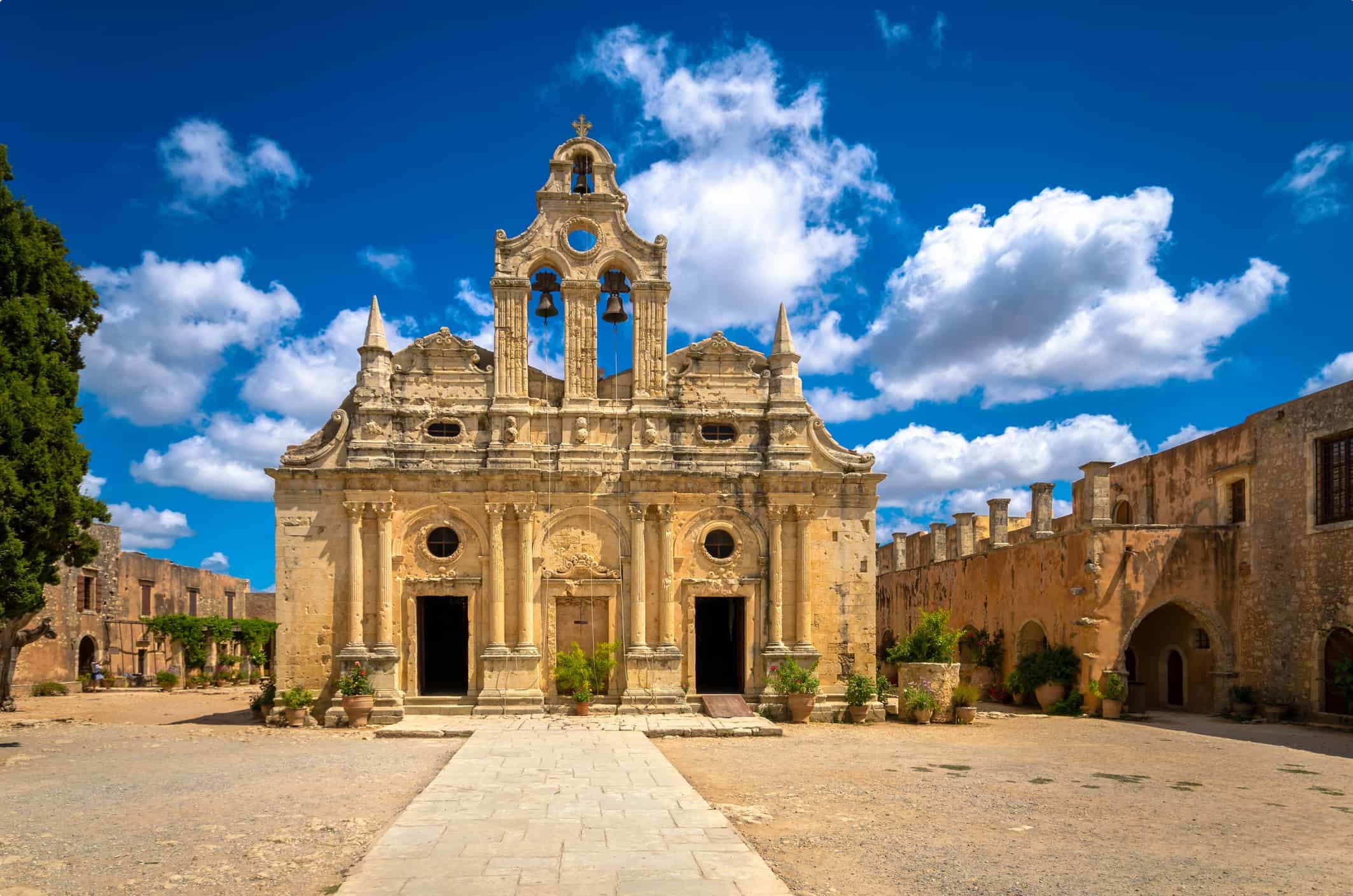
Venetian Crete
As with previous rulers of Crete, the Venetians used Crete as a centre for the eastern section of their commercial ventures. They also utilised produce from this island kingdom exporting many culinary delights from Crete such as wine, wheat, cheeses and timber although the latter was dwindling in ready supply. From the commencement of Venetian rule over their new colony, the Cretan people maintained their orthodox style of Christianity, continued to speak Greek and ensured their culturally-linked customs were practised whenever or wherever possible. This course of action by the Cretans meant they were in constant opposition to their rulers who had also asserted authority in a most discriminatory manner, keeping most of the benefits of the increased commerce out of the hands of the local populace.
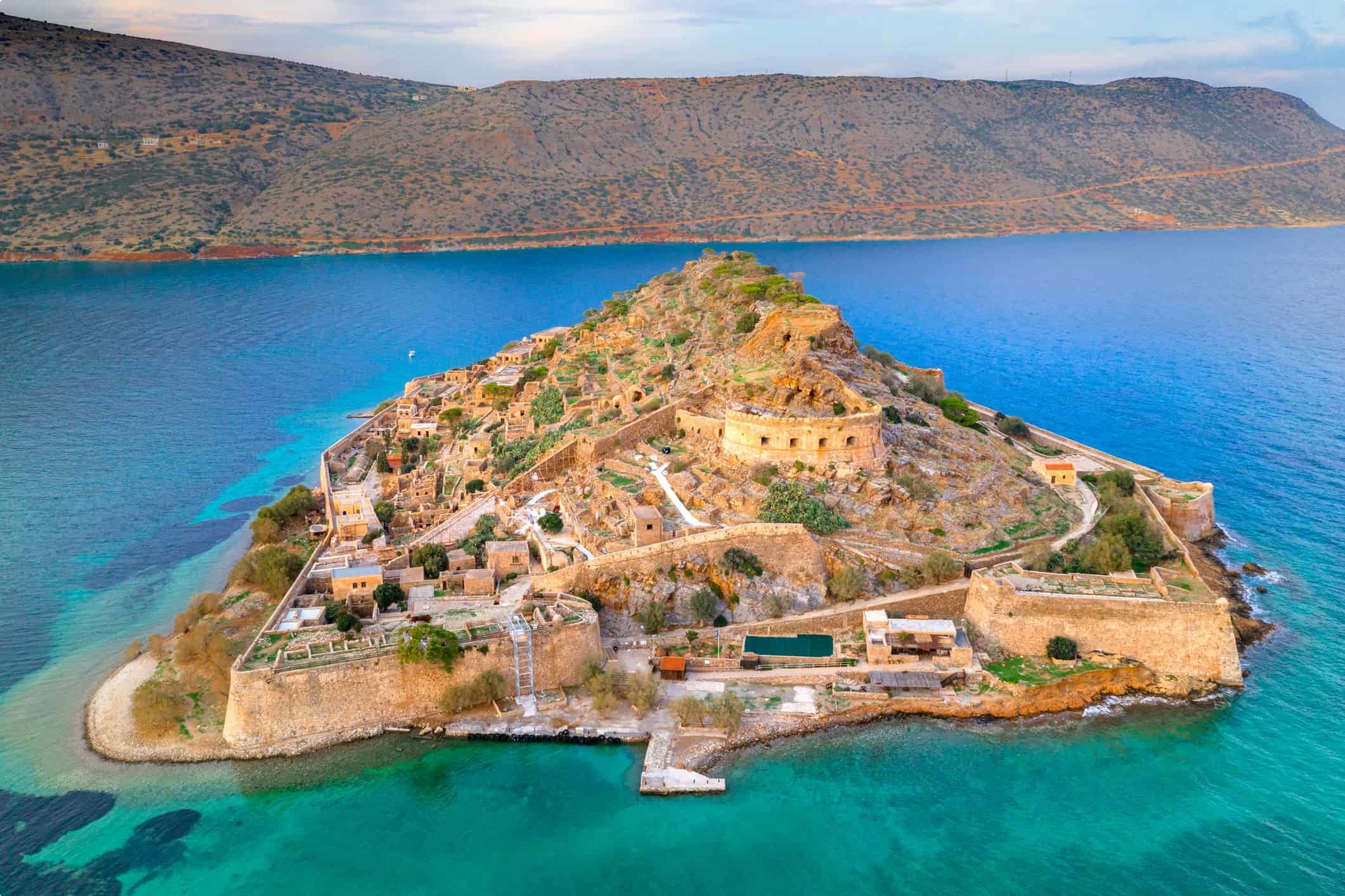
The 15 th and 16 th centuries witnessed a great reversal in the fortunes of the Venetian Empire as the Ottomans gradually took control of many of the territories of Venice. By the mid 16 th century, Crete was the only remaining possession of the trading nation in the Aegean. This continued expansion by the Ottomans soon came to involve the Cretan population, with parts of the island ravaged by the Turks again and again.
As is often the case in history, a coincidence of events amplifies a situation and together with the emergence of the Ottoman threat came crushing economic problems for the Venetian Republic. The fact that the Cretans had disliked, and actively resisted the rule of Venice from the start added fuel to the already smouldering fire. On-going and widespread revolts by the locals further undermined the Venetian power and authority. Much of the ferment built and originated in the mountainous areas that had stayed outside of any effective control by the Venetian occupation.
Crete Under the Ottomans (1669-1899CE)
Commencing in 1645, the Cretan War, or the final Ottoman-Venetian War saw Ottoman troops very rapidly overrunning most of island. Perhaps due to the fortification systems so well-planned during the early Arab occupation, the city of Candia (Heraklion) was able to hold back the Ottoman siege for more than twenty years. Such a prolonged stalemate of course dictates continual appraisal of supply lines for both sides and because of this the war also involved a number of naval battles to halt resupply of the Ottoman army. An attempt to blockade the Dardenelles failed to come to fruition because of a lack of numbers, even though Venice had a level of support from other Christian nations. The siege came to its conclusion in the form of a poorly (from the Venetian point of view) negotiated peace treaty. Venice retained a few off shore islands around Crete including Spinalonga that ultimately fell some years later in 1718.
During the centuries of Ottoman rule in Crete there were a great number of significant rebellions against the Muslims but the Greek War of Independence in 1821 brought about greater participation in the rebellions. When the Turkish rule first became established in Crete, a large percentage of the local population converted to the Islam to take advantage of advantages offered by the newly installed system. Estimates vary greatly but it is possible that close to 45% were Muslim by the time of the independence war. Many believe this conversion was for appearance only.
Spurred on by the independence movement on mainland Greece much of the Christian population rose up against the rule by the Turks. These revolts were met with a merciless response and although plague and famine decimated many of the Muslims, the Christians suffered most severely and rebellions were finally crushed. However, the moment Greece had gained its independence there were renewed violent clashes. Over time, the Ottoman administration gave into some of the demands, granting concessions such as the equal right to worship and limited political participation in particular areas. Unfortunately, the main demand of union with Greece was never on the table for discussion which increased the tensions over the next decades.

In 1866, the Cretan Revolt began with support from Greece and even some European countries. The uprising that was to last three years was finally quelled by greater political concessions from the Ottomans that in essence amounted to localised independence. Over the years, further disputes and extension of further concessions saw Crete reaching the point of a semi-independent parliamentary state within the Ottoman Empire under an Ottoman Governor.
The last Cretan insurrection in 1897 brought the declaration of war on Greece by the Ottomans, a completely untenable option in the eyes of the great powers of Europe, France, Great Britain, Germany, Austro-Hungary, Italy and Russia. A multinational force was immediately sent to Crete occupying key cities and expelling all Ottoman troops from the island. By the end of the following year, Crete was no longer considered part of the Ottoman Empire and was to be under autonomous rule as the Cretan State.
The Cretan State (1898-1913CE)
Prince George of Greece came down from mainland Greece and was appointed the High Commissioner for Crete at the close of 1898. Soon after an Executive committee was formed with a Chania-born lawyer, Eleftherios Venizelosas holding the position of the Justice Minister. In a matter of less than a year, serious disagreements regarding the future of Crete had arisen with this culminating in Venizelos resigning his position to challenge the arrangements politically. He and his followers’ most basic demand was the political union of Greece and Crete.
The Cretan Assembly voted in support of Venizelos but it was not until five years that the Greek flag finally flew over Chania, the end of a centuries-old struggle for the Cretan people and another chapter in Cretan history.
Escorted small group tour of Crete
Odyssey Travellers escorted small group tour of Crete provides a platform for the senior traveller interested in continuing to learn, whether as a couple or solo traveller, about this fascinating country full of history, incredible people, and stunning scenery. To bring the history to life on this small group tour to this unique part of the the Mediterranean Odyssey Traveller offers a variation of its escorted small group tour of Crete. The Eastern Mediterrean small group escorted tourfor 21 days spends 5 nights on Crete with a day trip collection exploring the island as part of the wider group of Mediterranean islands. This small group tour commences in Athens. a short version of this small group tour is also available.
Articles about Greece & Crete
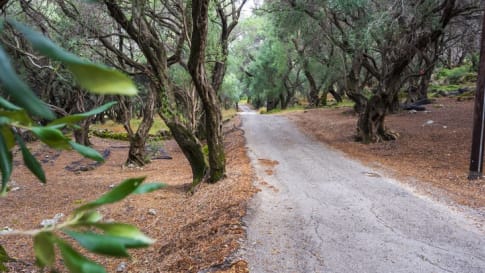
Corfu, Greece
Corfu differs to much of the rest of Greece, with notable limited archaeological sites but an abundant mixture of forts, medieval castles, palaces, Greek orthodox churches, and monuments.
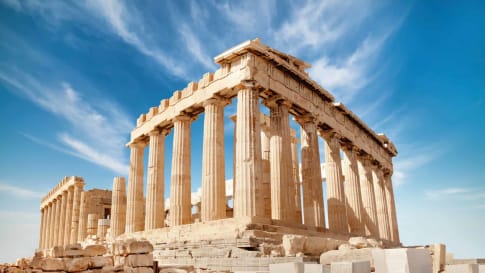
Creating Athens
Creating Athens Aerial view of Athens, Greece This article Creating Athens traces the civilisations of antiquity to the rise of Athens as a city-state after the world’s first “Dark Age”. It is intended as background…
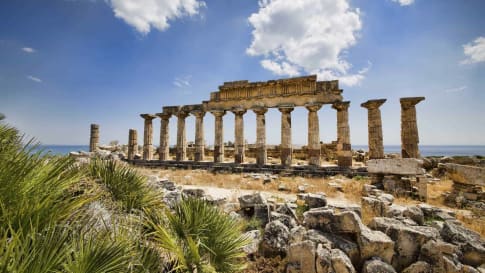
Dawn of Greek Civilization: The Definitive Guide for Travellers
The Beginning of Human Civilisation Ancient Greece stands out as a pivotal civilization that significantly influenced human progress. The period between 800 B.C. and 500 B.C., considered Ancient Greece, marked a flourishing era in various…
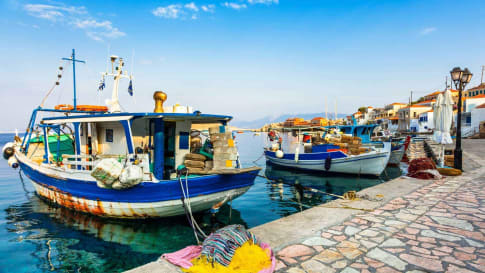
Empires Crossing the Mediterranean: 1130-1300
As a sea connecting continents and stretching from the Atlantic Ocean in the west to Asia in the east, the Mediterranean has for centuries been a centre of trade and exploration.
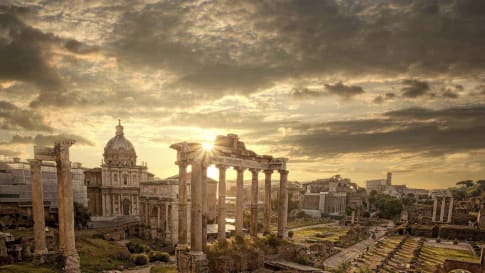
Exploring Ancient Cities
Exploring Ancient Cities What can we learn from exploring the ancient world? What do we take away from the wealth of knowledge uncovered as archaeologists investigate the ruins of past societies, while social scientists speculate…
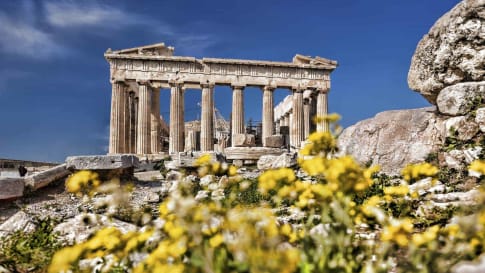
Greek Islands and Cyprus: Discovering the East Mediterranean
The Greek Islands and Cyprus are teeming with opportunities to visit archaeological sites and historic locations, while getting to know the region’s marvellous contemporary culture. Following the financial crisis, Greece became known as the centre…
Related Tours

Crete Small Group Tour: The Minoans
Visiting Greece
Crete rich in UNESCO World heritage sites this small group escorted tour provides a travel experience for guests with experienced local guides to remember. For senior couples or single travellers who seek to travel with other like minded people to destinations rich in ancient history then this in one of many small group journeys to be enjoyed.
From A$13,500 AUD

Greece small group escorted history tour
Our 22 day s mall group tour explores the land of great philosophers , myths, and legends. We will learn about the culture and heritage of modern Greece whilst exploring and learning Athens, which only found independence in its uprising from the Ottoman Empire in the 19th century.
From A$14,145 AUD
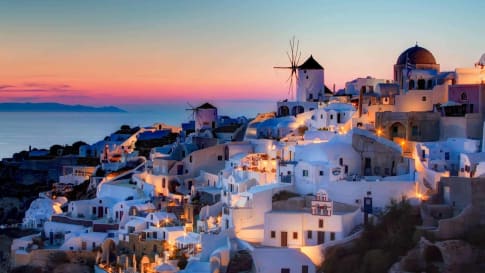
Santorini, Crete and Cyprus Small Group Tour | Eastern Mediterranean Islands Tour
Visiting Cyprus, Greece
A fascinating small group tour, with an amazing mix of culture and history – the islands of Greece , the cradle of Western civilisation , where traces of a centuries-old history exists. Visit Santorini, a remnant of a volcanic era; Crete , the home of the Minoan civilisation with important archaeological finds at Knossos and Phaistos. Rhodes, inhabited since the Stone Age; and venture further to the island of Cyprus , where east meets west.
From A$17,545 AUD

Join 22,383 like-minded travellers receiving our weekly newsletter.
- ☎️ 020 3131 5187
- Up to 4 nights
- Up to 7 nights
- 5 to 7 nights
- 8 to 14 nights
- 15 to 28 nights
- I’m flexible +/- 5 days
- Custom range
All of our arrangements have been specially designed to incorporate a reason to travel and, for ease of choice, these have been categorised under the titles shown below.
7 nights from
- An Island Escape to Crete
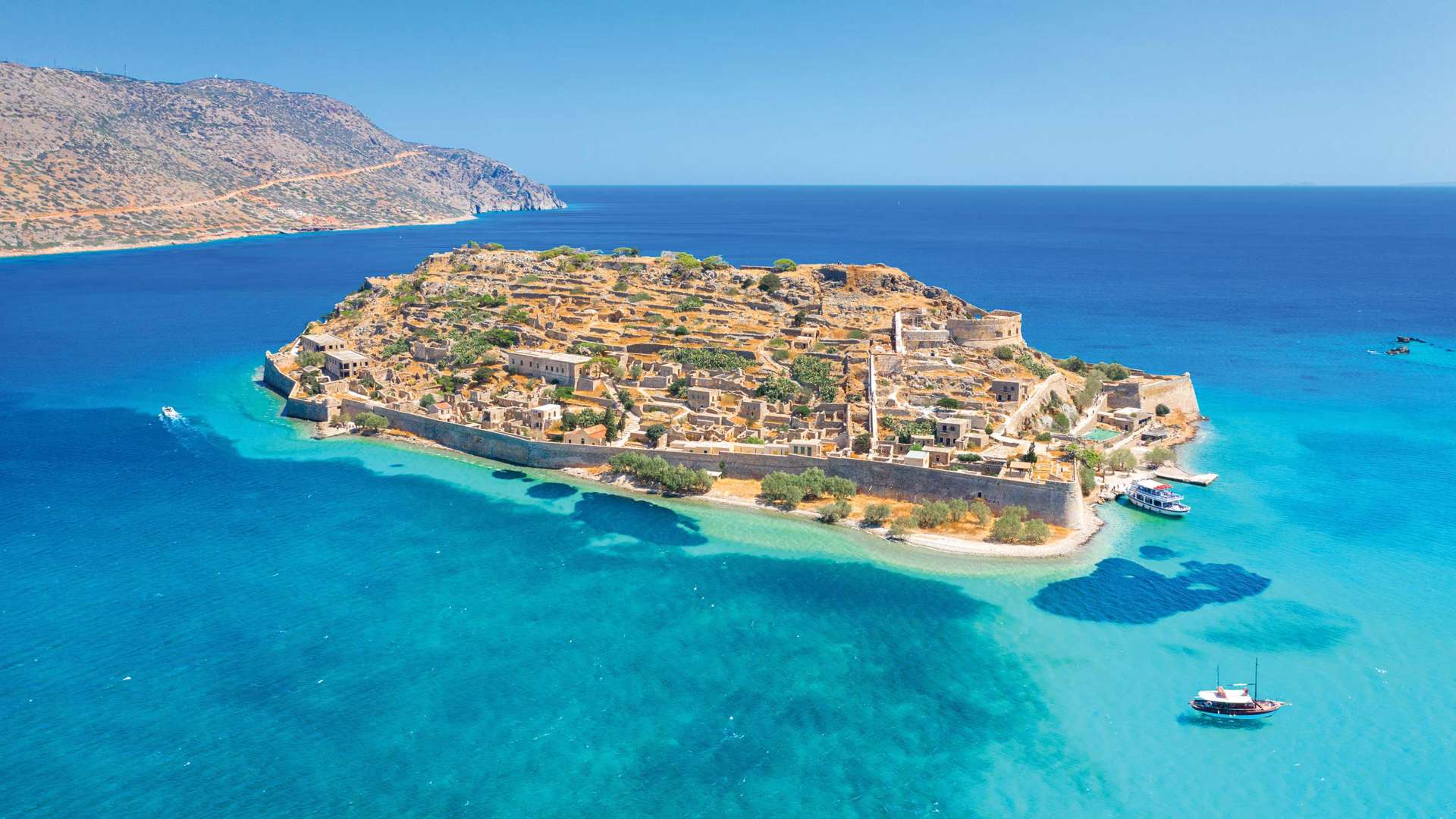
- Europe Tours
Venture into the rural heart of Crete on this 7-night tour and explore picturesque mountain villages, delve into Cretan culture and sail to the fascinating island of Spinalonga on a journey to remember
Discover the charming side of Crete, from a base in the centre of historic Heraklion, with excursions taking you to explore the east of the island. Visit traditional mountain villages like Kritsa, set in the foothills of the Lassithi mountains, and Kalamafka, famous for its limestone rock formations; and learn about the island’s long-standing arts and crafts heritage from locals who’ve long worked in the trade.
Tour a family-run olive grove to see how they’ve been producing olive oil for more than a century, and explore the famous village of Zaros, known for its fresh spring water. Visit Matala, a hippie fishing village home to millennia-old caves, and sail to Spinalonga – the island once known for its leper colony, now offering tours to teach visitors more about its moving history.
Other highlights include the Cave of Zeus, said to have been Zeus’s hiding place in Greek mythology; Seli Ambelou, home to historic, stone-built windmills; and Agios Nikolaos, known for its lively beaches and restaurants.
Along the way, you’ll have plenty of opportunities to learn about Cretan culture and get under the skin of the island. Take part in a pottery workshop, delight in tasting authentic Cretan cuisines and enjoy a traditional Greek night with live music and dancing for a glimpse into the island’s livelier side; this is Crete at its most enchanting.
- Heraklion - 7 nights
Tour Highlights
- Quaint villages and spectacular landscapes
- Explore an oil grove with an olive oil tasting
- Greek Night with a glimpse of village life
- Visit the beautiful region of Spingalonga
- Admire the beauty of Zaros Village
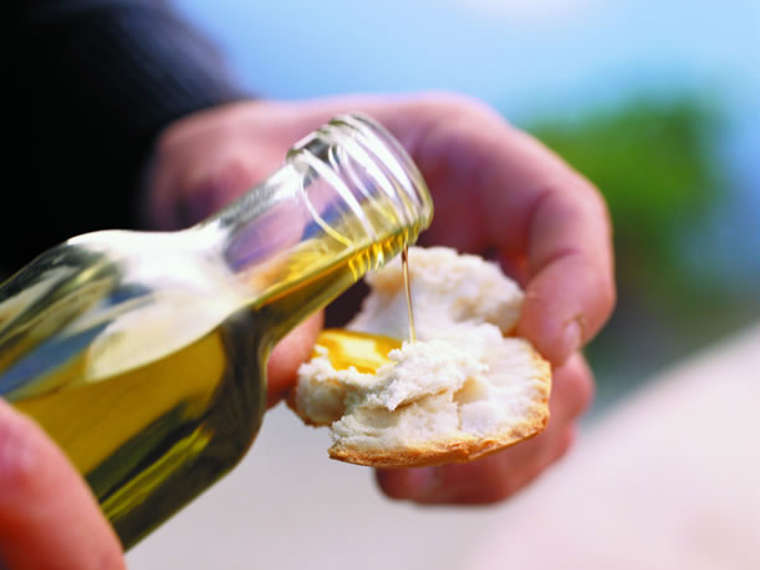
Unique Experiences
Cretan culture & cuisine.
Delight in Cretan culinary experiences from, cooking demonstration at a taverna with locally sourced ingredients to olive oil tasting and mezza style lunch with local wine. Enjoy a traditional Greek Evening in Kato Karouzanos with local live music, dancing and delicious food.
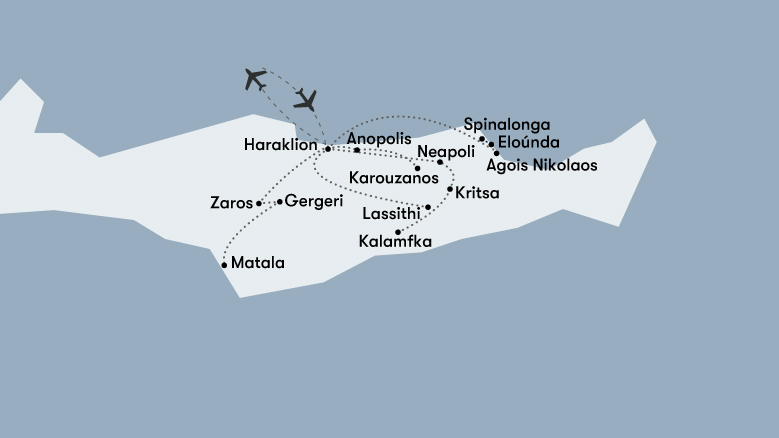
Fly from London to Crete’s historic capital, Heraklion. Transfer to the 5-star Hotel Aquila Atlantis Hotel, located in the city centre, to begin your seven-night stay. In the evening, meet your fellow explorers for a welcome drink at the hotel.
Key: B - Breakfast L - Lunch D - Dinner
- Itinerary -
Travel to Kritsa, a quaint village in the foothills of the Lassithi mountains, where historic houses line narrow, cobbled streets, and local weavers display their crafts. Continue on to the village of Kalamafka, set right on the edge of the mountains. Kalamafka is famous for its majestic limestone rock formations – among them Kastellos, a huge cliff which sits in the centre of the village and is home to an atmospheric cave temple. Take a leisurely walk and admire the beauty and charm of this enchanting village. From here, travel to the family-run Vassilakis Estate in Neapolis to embark on our Unique Experience, with a tour of an olive grove and learn about the production of olive oil using an original hand-operated press. Enjoy an olive oil tasting accompanied by traditional Cretan delicacies and local wine. (B, L)
Relax at the hotel this morning, or explore Heraklion at leisure. In the afternoon, travel to the traditional farming village of Anopolis, which offers breathtaking views over the surrounding mountains, and stop by a local ceramics shop to take part in a hands-on pottery class. Afterwards, continue on to the village of Kato Karouzanos, where you’ll learn about village life in the past and see centuries old artefacts, from old looms to historic containers once used for distilling the local spirit, ‘raki’. In the evening, take part in a Greek night with traditional food and wine, accompanied by local live music and dancing. (B, D)
The day is yours to enjoy at leisure. Or join an optional sunset cruise from Heraklion Marina towards the island of Dia, which according to legends was created from the gods. The tiny and uninhabited island is home to several peaceful bays, an ancient Minoan port and dramatic rocky cliffs. There is a possibility for snorkelling or swimming in the crystal-clear waters. Relax on board with some local snacks and drinks and simply enjoy the stunning landscapes and beauty surrounding the Cretan sea (pre-bookable).
Explore the spectacular Lassithi Plateau this morning, set 830m above sea level in the heart of the Dikti Mountains. Stop at Pyschro Village for sweeping views over the plateau, then visit the Cave of Zeus – one of Crete’s most famous archaeological sites, said to have been Zeus’s hiding place. Admire its illuminated stalactites and stalagmites. Continue to Seli Ambelou, known for its historic, stone-built windmills. Watch a demonstration at one of the restored mills, before enjoying a cooking demonstration in a local taverna followed by a traditional mezze lunch. On the way back, visit the village of Krasi, famous for its 2,000 year-old tree and Roman springs. (B, L)
Travel to Elounda and board a traditional fishing boat as you set sail for the island of Spinalonga, known for its moving history as a centre for those with leprosy. Learn about its stirring past on a guided tour while admiring picturesque views, before heading back to Elounda with time at leisure to swim. Afterwards, visit the town of Agios Nikolaos, famous for its sandy beaches and lively port. (B)
Visit the idyllic village of Zaros this morning, known across Greece for its spring water and set around a picturesque lake flanked by sweeping mountains. Travel to Messara, famous for agriculture and natural beauty. Meet a farmer and learn about natural farming techniques and harvest of organic products, before continuing on to Matala – a fishing village known for its hippie atmosphere and millennia-old caves (caves are not advisable to visit as the surfaces are uneven and slippery). Free time to explore Matala, perhaps have lunch in a local taverna or swim in crystal clear waters of the Libyan Sea. In the evening, relax and enjoy your final night in Heraklion. (B)
Transfer to Heraklion airport for the return flight to London. (B)
Please fill required fields.
This is a busy itinerary and involves many visits on foot and uneven surfaces.
Accommodation
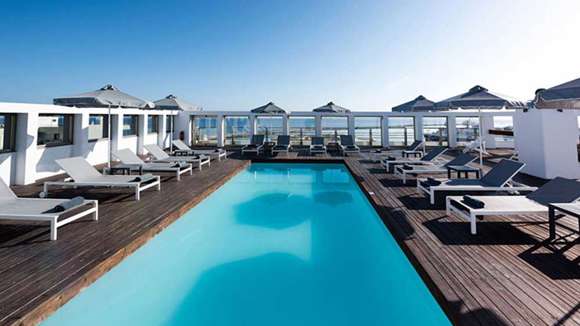
Aquila Atlantis Hotel - Heraklion
Lorem ipsum dolor sit amet consectetur adipisicing elit. Soluta tenetur maxime iure, deleniti nemo beatae id mollitia, animi officia eveniet asperiores incidunt sed minus veritatis repellendus. Dolore delectus maxime eveniet magni fugit quisquam eos aliquid ut. Ipsum doloremque soluta quia suscipit, beatae, distinctio illum ex nostrum reprehenderit, consequuntur asperiores voluptates!
An accommodation tax is payable locally, approximately €7-€10 per room per night.
Extra Nights
Stay in heraklion before you start your tour or before flying back to the uk.
Extra nights are on request, please call to discuss your requirements Aquila Atlantis Hotel (per night)
2024 Standard City/Atrium View £65 (Oct £55) Single supplement £40 (Oct £35) Harbour View £75 (Oct £65) Harbour View single supplement £65 (Oct £60) Arrival or departure transfer £25
2025 Standard City/Atrium View £70 (Apr & Oct £60) Single supplement £45 (Apr & Oct £35) Harbour View £80 (Apr & Oct £70) Harbour View single supplement £70 (Apr & Oct £65) Arrival or departure transfer £25
Optional Excursions

Sunset Cruise
Join an optional sunset cruise from Heraklion Marina towards the island of Dia, which according to legends was created from the gods. The tiny and uninhabited island is home to several peaceful bays, an ancient Minoan port and dramatic rocky cliffs. There is a possibility for snorkelling or swimming in the crystal-clear waters. Relax on board with some local snacks and drinks and simply enjoy the stunning landscapes and beauty surrounding the Cretan sea.
Dates & Prices
- Supplements, Extras & Upgrades
per person in a twin/double room
- 3 Places Remaining on Tour
Price Includes:
Air travel and taxes, transfers, 7 nights’ accommodation, breakfast daily, 2 lunches, 1 dinner, itinerary as described, services of guides and local representatives. If our specially negotiated airfares are unavailable at the time of booking, a supplement may apply.
Not Included:
Travel insurance, optional excursions, accommodation tax, tipping, porterage, any government taxes or compulsory charges introduced after publication.
Supplements per person
Single supplement.
- 2024: Sep 19
- 2024: Oct 17
- 2025: Apr 24
- 2025: May, Sep
- Aquila Atlantis Hotel - Executive Twin/Double Harbour View Room from £ 40
- Aquila Atlantis Hotel - Executive Single Harbour View Room from £ 350
- Sunset Cruise (2024)
- Sunset Cruise (2025)
- Arrival transfer
- £25 (2025 £28)
- Departure transfer
Similar Tours
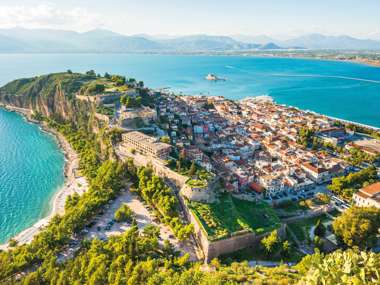
Ancient Greece of the Olympics
Sail on a small ship, full circle around the Peloponnese, from inimitable Athens to ancient Epidaurus, old-world Nafplion, the Mycenaean palaces of Nestor and Agamemnon, medieval Monemvasia and Mani, Olympian relics of Gods and games, and the Delphic Oracle
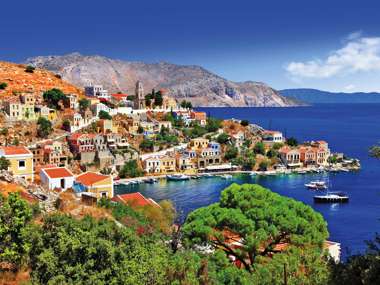
Island of Rhodes
On this relaxing and revealing tour, a blissfully beautiful acropolis, a Doric city-state, a hilltop church in a deserted monastery, and a sail to beguiling Symi, complement the castle citadel of the crusader Knights of St. John, forming the fabulous Old Town of Rhodes
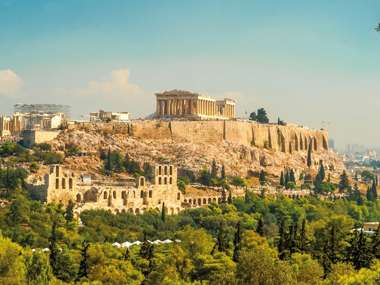
Secret Greece - Alexander & Olympus
From Thessaloniki’s Byzantine quarter to the haunts of Alexander the Great, the home of the Gods, Mount Olympus, the monasteries of Mount Athos, Philippi’s Roman remains, and bountiful nature at Lake Kerkini, this is a glorious discovery of northern Greece

Explore the Wonders of Balos Lagoon and Falassarna: Your Ultimate Private Tour
Discover the Exquisite Beauty of Balos Lagoon Balos Lagoon: A Natural Marvel Balos Lagoon, located on the northwest coast of …

Exploring the Untouched Beauty of Balos Beach
Balos Lagoon – The Ultimate Getaway Experience the ultimate island getaway with a private tour of the breathtaking Balos lagoon …

Discovering the Wonders of Ancient Knossos Palace
Explore the Rich History and Culture of Crete Explore the rich history and culture of Crete with our private tour, …
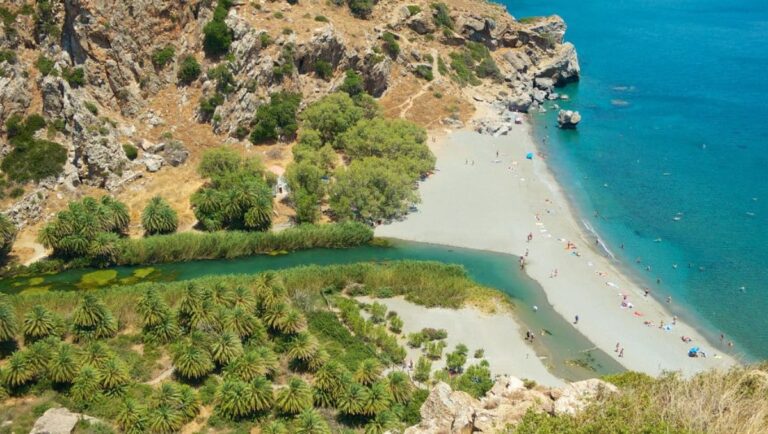
Preveli: One of the Most Unique Places in Crete
Indulge in Preveli Experience Indulge in a one-of-a-kind experience of Crete with our personalized private tour. Enjoy hassle-free pick-up and …
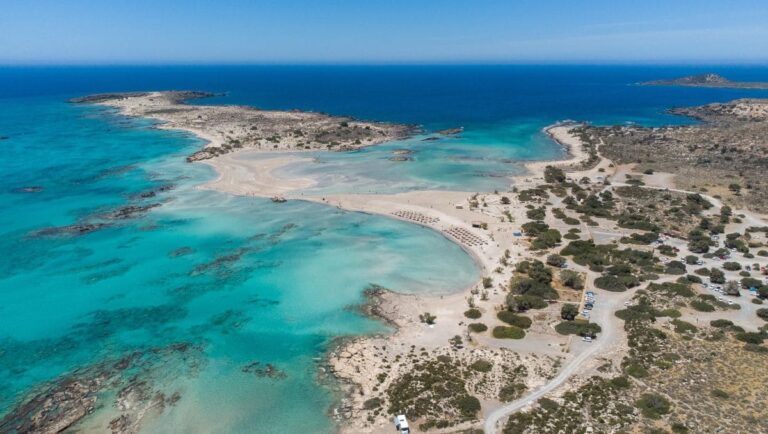
Why You Really Need an Elafonisi Private Tour?
Make Your Ideal Elafonisi Private Tour Experience Crete’s west coast’s natural beauty with our customizable private tour. Our tour takes …

SANTORINI 1 Day Guided Excursion With HIGHSPEED From CRETE
The SANTORINI 1 Day Guided Excursion from Crete offers a chance to explore the picturesque island of Santorini in a single day. Travelers can enjoy a high-speed boat ride , guided tours of the charming towns, and transportation via air-conditioned coach. With a maximum of 50 participants, the excursion promises a personalized experience as visitors enjoy Santorini’s iconic whitewashed buildings, volcanic landscapes, and rich history and culture. Whether you’re seeking stunning vistas or a deeper understanding of this remarkable destination, this excursion could be the perfect way to make the most of your time.

- A 1-day guided excursion from Crete to the picturesque island of Santorini, featuring high-speed boat transportation and a guided tour of the towns of Oia and Fira.
- The tour includes professional multilingual guides, air-conditioned coach transportation, and all meals and drinks for a maximum of 50 travelers.
- Pickup locations are around Crete, excluding Heraklion, with travelers meeting at Heraklion Port between 5:45am and 7:00am for the full-day trip.
- Highlights of the tour include admiring the iconic whitewashed buildings, exploring the unique volcanic landscape, and learning about the island’s history and culture from the local guide.
- The compact group size ensures a personalized experience and flexibility in navigating Santorini’s popular sites.
More tours and experiences nearby.
- Full-Day Land Rover Safari From Heraklion With Lunch
- Quad Safari Half Day
- Full-Day Small-Group Tour in Crete & the Cave of Zeus
- Quad Bike Tour
Overview of the Excursion
This 1-day guided excursion from Crete to Santorini provides travelers with a comprehensive sightseeing experience, featuring a high-speed boat ride and a guided tour of the island’s renowned destinations.
Accompanied by a professional multilingual guide, guests will have the opportunity to explore the picturesque towns of Oia and Fira, taking in the stunning views and seeing the island’s rich cultural heritage.
The tour includes transportation via an air-conditioned coach , as well as all meals and refreshments throughout the day.
With a maximum of 50 travelers, this excursion offers a personalized and intimate experience, ensuring that each guest can make the most of their time on the beautiful island of Santorini.
Inclusions and Exclusions
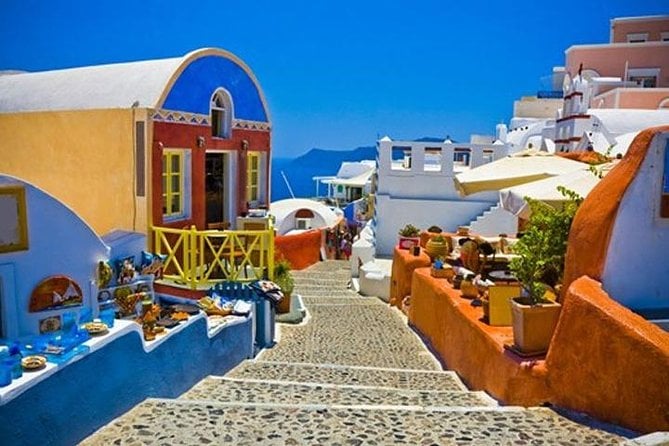
The excursion includes a professional multilingual guide , highspeed boat transportation , air-conditioned coach , guided tour on Santorini , gasoline, insurance, and all meals and drinks on board, on the coach, and during stops.
Travelers won’t have to worry about any additional costs as the package covers everything they’d need for their day trip to Santorini from Crete.
The comprehensive inclusions ensure a hassle-free and enjoyable experience , allowing guests to fully enjoy the beauty and culture of the iconic Greek island.
With all the logistics taken care of, travelers can simply sit back, relax, and let the professionals handle the details.
Pickup and Dropoff Locations

Travelers can be picked up from various locations around Crete, including Sissi/Milatos , Malia, Stalida/Stalis, Chersonissos, Anissaras, Analipsi, Gouves, Gournes, Kokini Chani, Karteros, and Amoudara(Gazi).
The pickup time is between 5:45am and 7:00am. However, there’s no pickup from Heraklion, and travelers must meet the group at Heraklion Port instead.
The excursion is a full-day trip , with a maximum of 50 travelers . After exploring Santorini, travelers will be returned to their respective pickup locations around Crete.
This arrangement ensures convenience and accessibility for participants across the island.
Tour Duration and Capacity

The guided excursion to Santorini from Crete lasts for a full day, with a maximum capacity of 50 travelers. This ensures a comfortable and personalized experience for all participants.
The excursion is 1 day in length , allowing ample time to explore the stunning island of Santorini.
The maximum number of travelers is capped at 50, providing an intimate group setting for the guided tour.
This limited group size enables the professional guide to offer a more attentive and engaging experience for each guest.
The compact nature of the tour group also allows for greater flexibility and the ability to navigate Santorini’s popular sites with ease.
Highlights of the Santorini Tour
Highlights of the Santorini tour typically include visiting the picturesque town of Oia and the island’s capital Fira , where travelers can admire the iconic whitewashed buildings and stunning caldera views.
Visitors will also have the chance to explore the island’s unique volcanic landscape , which features dramatic cliffs, black sand beaches, and stunning blue-domed churches .
The tour includes a guided excursion, allowing travelers to learn about the island’s rich history and culture from a knowledgeable local guide.
Whether you’re interested in photography, architecture, or simply soaking up the island’s natural beauty, the highlights of the Santorini tour are sure to leave a lasting impression.
Confirmation and Accessibility

Confirmation is received at the time of booking, and the tour isn’t wheelchair accessible .
Infants must sit on laps, but most travelers can participate in the excursion.
Visitors should note that Santorini can be particularly crowded during high season , and there’s a possibility of not visiting the black beach due to heavy traffic.
Travelers can expect a confirmation immediately after booking the tour.
The tour isn’t suitable for individuals in wheelchairs or with mobility issues.
Infants are welcome but must be seated on a parent or guardian’s lap during the tour.
The majority of travelers will be able to fully participate in the Santorini excursion.
Additional Considerations
Travelers generally can expect a smooth and well-organized excursion , though they should remain mindful of potential challenges during the peak tourist season .
Santorini is a popular destination, and visitors may encounter crowded conditions , especially in the picturesque towns of Oia and Fira. The tour operator notes that there’s a possibility of not visiting the black beach due to traffic congestion.
Plus, the tour isn’t wheelchair accessible, and infants must sit on laps.
While these considerations may require some flexibility, the overall experience provides an efficient way to explore the stunning island of Santorini from Crete, with all necessary transportation, meals, and expert guidance included .
Contact Information
The tour operator provides contact information for inquiries and bookings, which can be accessed through their website or by phone. Interested travelers can:
- Explore the tour details and availability on the company’s website
- Call the dedicated customer service team for personalized assistance
- Review the frequently asked questions section for quick answers
- Connect with the operator on social media platforms for updates and special offers
The tour is designed to provide a seamless and enjoyable experience for visitors who wish to discover the remarkable island of Santorini from the comfort of Crete. With transparent pricing and reliable service, the operator aims to make planning the day trip hassle-free.
Here's a few more nearby tours and experiences we think you'll like.
- The Real Cretan Cooking Experience
- Sailing Trip to the Top Coasts of Crete, Daily/Multi-Day
- Georgioupolis Safari Off Road Tours Outdoor Activities Land Rover Defender
- Quad ATV Safari From Georgioupolis Area
- Snorkeling and Boat Tour in Crete
- Crete: Full-Day Private Tour
Frequently Asked Questions
Can i bring my own food and drinks on the tour.
Yes, you can bring your own food and drinks on the tour. The tour includes breakfast, lunch, and dinner, as well as drinks on board, but you’re welcome to bring additional items if needed.
What Should I Wear/Bring for the Santorini Tour?
Wear comfortable, casual clothing and walking shoes. Bring sun protection like a hat and sunscreen, and a lightweight jacket or sweater for cooler weather. Don’t forget your camera to capture the stunning Santorini scenery.
Are There Any Age Restrictions for the Tour?
The tour has no age restrictions. Infants must sit on laps, and most travelers can participate. The tour is suitable for both children and adults, allowing families to enjoy the Santorini experience together.
Can I Extend My Stay on Santorini After the Tour?
Travelers can extend their stay on Santorini after the tour, but this would need to be arranged independently. The tour package only covers the one-day excursion from Crete, so any additional time on the island must be planned separately.
Is There a Way to Customize the Itinerary for the Santorini Tour?
The tour operator may be able to customize the Santorini itinerary, but it likely comes at an additional cost. Travelers should contact the tour provider to inquire about any opportunities for customization or changes to the standard tour program.
Not for you? Here's more of our most recent tour reviews happening neaby
- Authentic Olive Oil and Cultural Experience in Crete
- Full Day Trip to Spinalonga Zeus Cave and Olive Oil Factory
- Hersonissos Sunset Catamaran Cruise With Finger Food & Drinks
- Heraklion: Scuba Diving Experience for Beginners
- Full-Day Apokoronas Culture, Cuisine and Wine Tour From Chania
- All Day Private Family Tour to Elafonisi Beach & Agia Sofia
- Excursion to Richtis Gorge & Waterfall
- Rock Climbing in Crete With a Guide at Rethymnon, Plakias Beach
- Archery for Everyone
- Cretan Wines & Olive Oil Tour – the Treasures of Crete
- Pottery Village of Margarites – the Monastery of Arkadi & the Gorge of Patsos
- Boat Trip With Scuba and Snorkeling in Chania
- Heraklion, Galatas Village: Cretan Cured Meat Tasting & BBQ
- Crete Yacht Cruises 7-Hours Private Guided Cruise in Ag. Nikolaos
- Wine Tasting in Rethymno
The Santorini 1 Day Guided Excursion from Crete offers travelers a chance to explore the picturesque island with ease.
Featuring a high-speed boat ride , guided tours, and all-inclusive amenities , this excursion provides a comprehensive and personalized experience.
Whether you’re seeking to admire the iconic whitewashed buildings, volcanic landscapes, or learn about the island’s rich history, this guided day trip is an excellent choice.
Similar Posts
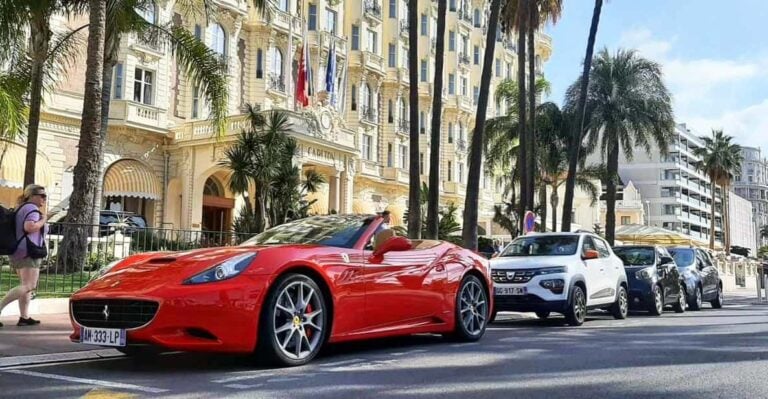
Cannes:private Ferrari Big Tour to Juan Les Pins and Antibes

Valencia : Fire Cracker Experience. A Say To Remember!
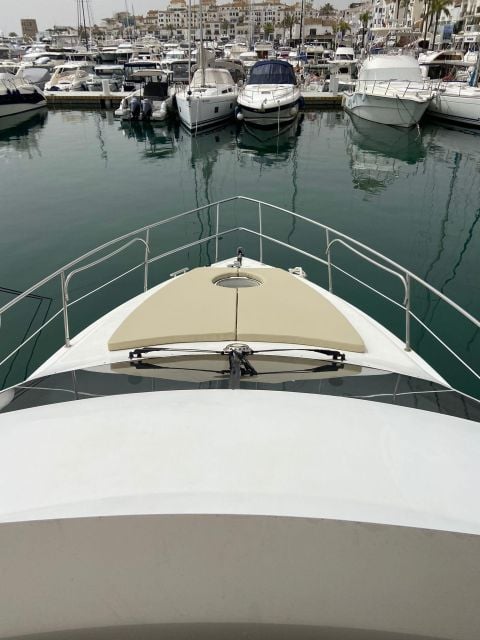
Marbella: Boat Trip With Dolphin Watching and Drinks

Katherine Outback Experience Show Ticket

Pokhara: 4-Day Trek to Ghorepani Poon Hill and Ghandruk

4×4 Driving Experience at Flying Altitudes – 7 Days
WiretoWire: Scottie Scheffler caps off historic season with FedExCup
Wire to Wire
Change Text Size
More drama unfolds with FedExCup Fall
After the conclusion of the FedExCup Playoffs and the crowning of the FedExCup champion, the PGA TOUR continues with the FedExCup Fall, the eight-event series beginning with the Procore Championship (Sept. 12-15) and concluding with The RSM Classic (Nov. 21-24) . The drama continues as players’ PGA TOUR status remains at stake. Tournaments in the FedExCup Fall offer winners the same benefits as Regular Season events – including a two-year exemption on the PGA TOUR, 500 FedExCup points and spots in THE PLAYERS Championship, The Sentry and those major championships that invite PGA TOUR winners. The FedExCup Fall also is when top-125 eligibility, which provides exempt status into Full-Field Events, is finalized for the following season. Additionally, the top 10 players on the FedExCup Points List at the conclusion of the FedExCup Fall who are not yet eligible for the Signature Events will get into the two Signature Events following the season-opening The Sentry as part of the Aon Next 10.
Countdown until Royal Montreal
The Presidents Cup returns to The Royal Montreal Golf Club in Montreal, Canada, Sept. 24-29. The top six players for the U.S. Team and the International Team were determined at the conclusion of the BMW Championship , and International Team Captain Mike Weir and U.S. Team Captain Jim Furyk will announce their captain’s selections on Tuesday, Sept. 3, to round out their 12-man teams. Royal Montreal will become the second international venue to host the event more than once, joining The Royal Melbourne Golf Club in Melbourne, Australia. Keegan Bradley and Justin Thomas are among those vying for a spot on the U.S. Team. Bradley, the 2025 U.S. Ryder Cup captain, jumped up eight places to No. 10 in the Presidents Cup standings after winning the BMW Championship. Thomas currently sits at No. 19 in the standings. Those ahead of Bradley in the standings include Sam Burns (No. 7), Tony Finau (No. 8) and Russell Henley (No. 9).
Video of the week
One word to describe 2024 season: The Sentry vs. TOUR Championship
“Teddy (Scott) has always been my biggest supporter. I think the results speak for themselves after he was able to pick up my bag and start helping me. He really is a huge part of the team. I don't know if I'd be able to do any of this without him on my bag. We've got a great relationship. He has a habit of saying the right thing at the right time to kind of keep me in the right frame of mind.” – Scottie Scheffler on his caddie Ted Scott after the pair won the 2024 FedExCup
By the numbers
7 – With his win at the TOUR Championship, Scottie Scheffler becomes the first player since Tiger Woods to win seven times in one season .
3 – Frederik Kjettrup earned the first Three-Victory Promotion from PGA TOUR Americas after collecting his third win of the season at CRMC Championship presented by Gertens.
2 – Collin Morikawa’s impressive display around East Lake earned him second spot and his highest finish in the FedExCup .
- Skip to Navigation
- Skip to Main Content
- Skip to Related Content
- Today's news
- Reviews and deals
- Climate change
- 2024 election
- Newsletters
- Fall allergies
- Health news
- Mental health
- Sexual health
- Family health
- So mini ways
- Unapologetically
- Buying guides
Entertainment
- How to Watch
- My watchlist
- Stock market
- Biden economy
- Personal finance
- Stocks: most active
- Stocks: gainers
- Stocks: losers
- Trending tickers
- World indices
- US Treasury bonds
- Top mutual funds
- Highest open interest
- Highest implied volatility
- Currency converter
- Basic materials
- Communication services
- Consumer cyclical
- Consumer defensive
- Financial services
- Industrials
- Real estate
- Mutual funds
- Credit cards
- Balance transfer cards
- Cash back cards
- Rewards cards
- Travel cards
- Online checking
- High-yield savings
- Money market
- Home equity loan
- Personal loans
- Student loans
- Options pit
- Fantasy football
- Pro Pick 'Em
- College Pick 'Em
- Fantasy baseball
- Fantasy hockey
- Fantasy basketball
- Download the app
- Daily fantasy
- Scores and schedules
- GameChannel
- World Baseball Classic
- Premier League
- CONCACAF League
- Champions League
- Motorsports
- Horse racing
New on Yahoo
- Privacy Dashboard
- Fantasy Football
- Yahoo Sports AM
- College Sports
- Horse Racing
- Fantasy Sports
- What & How To Watch
- Leaderboard
- Masters Tournament
- PGA Championship
- British Open
- Fantasy Football 2024 Draft Kit
- No. 1 Sinner reaches quarterfinals
- BC stuns No. 10 FSU
- Steelers name Wilson captain
- Chestnut sets world record vs. Kobayashi
Tour Championship: Scottie Scheffler caps historic season with dominant win at East Lake to earn first FedEx Cup
Scheffler cruised to a four-shot win over the field at east lake to win the fedex cup on sunday afternoon in atlanta.
He made it interesting briefly on Sunday afternoon, but Scottie Scheffler ended the 2024 season in dominant fashion at East Lake.
Scheffler cruised to a four-shot win at the Tour Championship in Atlanta on Sunday afternoon with a final-round 67. That officially earned Scheffler the FedEx Cup for the first time in his career, and the massive $25 million prize that comes with it. The win, which is sure to bring him a third consecutive Player of the Year award, ended what has been a season the PGA Tour hasn't seen since Tiger Woods was in his prime.
An unforgettable season for Scottie Scheffler! 🏆 He is the only player to win @THEPLAYERS , @TheMasters and the @TOURChamp in the same season. pic.twitter.com/q8bH1vdKmp — PGA TOUR (@PGATOUR) September 1, 2024
"We've put in a lot of work to get to this point, and it's been a long week," Scheffler said. "Right now I'm just pretty tired, so don't really know how to put this into words. But it's a pretty special feeling to be finally holding the trophy."
Thanks to his massive lead in the FedEx Cup standings, Scheffler started the week out with a two-shot lead at 10-under. He quickly pushed his lead to seven shots after his 6-under 65 in the opening round, which made him the first player on record to hold a seven-shot lead or greater after 18 holes of a Tour event.
Scheffler then carded back-to-back 66s, which gave him a five-shot lead over Collin Morikawa entering the final round. Morikawa was the only golfer with a real shot to catch him on Sunday, too, as he was the only man closer than nine shots.
At least for a moment, it looked like Morikawa was going to pull that off. Scheffler stumbled a bit on his front nine, including a four-hole stretch where he made three bogeys. Morikawa went 2-under on that same stretch, including a clutch birdie putt at the par-4 eighth, which suddenly cut Scheffler’s lead down to just two.
HUGE birdie putt for @Collin_Morikawa (and he knows it.) Scottie's lead has gone from 7 to 2. pic.twitter.com/RiTiKPByUc — PGA TOUR (@PGATOUR) September 1, 2024
But Scheffler responded immediately. He rattled off three straight birdies to take control of the tournament once again. He easily drained a downhill eagle putt at the par-5 14th, too, which moved him to 30-under on the week.
Just like that, his lead was back to five and the tournament was essentially over.
5-under on his last 6 holes. Scottie Scheffler leads by 5 with 4 to play! pic.twitter.com/p7nLiV2kRv — PGA TOUR (@PGATOUR) September 1, 2024
Scheffler finished with a 4-under 67 on Sunday to grab his win. Morikawa finished in second at 26-under on the week with his final-round 66. Sahith Theegala — who called himself on a two-shot penalty on Saturday — finished alone in third at 24-under.
Scottie Scheffler won 7 times in 2024
Scheffler’s win on Sunday capped what has been an incredible season for the top-ranked player in the world, one that hasn’t been seen since Woods nearly two decades ago.
Scheffler won seven times in 2024. His first win came at the Arnold Palmer Invitational in March, which teed off a truly historic stretch for him. Scheffler followed that victory up with a win at The Players Championship, the Masters, and the RBC Heritage in his next four starts. He finished T8 at the PGA Championship, too, which came after he was arrested ahead of the second round over a wild incident outside of the course gates .
In total, Scheffler finished outside of the top 10 just one time in his first 13 starts. He also won at the Memorial Tournament and in a playoff at the Travelers Championship, and he claimed a gold medal for the United States at the Olympics last month in Paris. His six Tour wins before July made him the first golfer to do so on Tour since Arnold Palmer in 1962.
"I think the gold medal is pretty cool," Scheffler said. "I think when you hear people chanting "U-S-A," even though it's been over a month now since it happened, you still hear people talking about it, chanting. It's pretty cool. Like I said, I take a lot of pride in being an American, so pretty fun to bring home that gold medal.
"As far as the year goes, I really don't know how to put it into words."
More PGA Tour news
- Rory McIlroy wants to cut back on schedule moving forward: ‘I hit a bit of a wall of post-U.S. Open’
- Tour Championship purse, prize money: Sahith Theegala’s self-imposed penalty cost him $2.5 million at East Lake
- Tour Championship: Sahith Theegala calls 2-shot penalty on himself despite nobody else seeing his bunker error
Scheffler is the first golfer to win seven times in a single season, including one major championship victory since Woods pulled that off in 2007. Scheffler is one of just four golfers to do that since 1980, too. Only Woods and Vijay Singh have won more in a single season in the modern era of golf. They share the record with nine wins.
Scheffler has now won 13 times in his career, more than half of which came in 2024. He’s the fastest golfer to reach 13 career Tour wins since 1960. It took him just 931 days to do so, which was nearly 100 days faster than Jack Nicklaus’ previous record.
He also shattered the single season earnings record in 2024. He entered this week just shy of having earned $29 million, which broke his own record that he set during the 2022-23 campaign. His FedEx Cup win pushed him north of $50 million for the season. Scheffler earned nearly $830,000 for each Tour round he played this season.
Scheffler will remain at No. 1 in the Official World Golf Rankings for a 68th consecutive week on Monday, which is a streak that is sure to continue for the next weeks and months to come as the golf world slows down.
- Global Elections
- About Speakers Bureau Careers Podcast
Pope Francis’ 12-day Asia tour is one of the longest papal foreign visits in history
Sign up for Semafor Flagship: The daily global news briefing you can trust. Read it now .
Pope Francis on Monday began a 12-day tour of Southeast Asia and South Asia, marking one of the longest foreign trips any pope has embarked on in the Holy See’s history.
The 87-year-old Catholic leader is first due in Indonesia before heading to Papua New Guinea, East Timor, and Singapore. The trip — originally planned for 2020 but delayed to do the pandemic — will focus on promoting interfaith dialogue , highlighting climate change threats, and reinforcing the Catholic Church’s importance in Asia, The Guardian reported.
Francis has previously visited several other Asian countries and has emphasized diversifying the Church’s leadership with Catholics from Asia. His visit to Indonesia — the world’s most populous Muslim nation — and Papua New Guinea — one of the world’s most ethnically diverse countries — will emphasize the Church’s role in promoting coexistence, religious leaders told CNN.
“The Catholic Church is no longer a Eurocentric or western institution but one where churches in Asia, Africa and Latin America have a growing voice ,” CNN’s Vatican correspondent wrote.
The trip is also an attempt to promote closer ties to China, The New York Times reported. China and the Holy See do not have official diplomatic ties and no pope has been able to visit China. But Francis in 2018 made a secretive deal with Beijing for the appointment of bishops, and this trip is seen as an opportunity to “ talk to countries he can’t go to ,” a professor of theology told the Times.
Francis has also pledged “ concrete commitment ” to tackling climate change ahead of his trip, given that Southeast Asia is particularly susceptible to environmental catastrophes of floods and extreme heat.
Still, many are worried that Francis is too frail for such a grueling tour that involves more than 43 hours of air travel and meetings: He canceled an appearance at a Dubai summit last year because of health problems.

IMAGES
VIDEO
COMMENTS
Get picked up at your hotel or the location of…. 14. Private Guided Jeep Tour, Zeus Cave, Lasithi Plateau Half day. Spend a day exploring Crete with a local guide, learn about local habits and secrets, and visit hidden gems. Visit Lasithi…. 15. Chania Old Town Artisans and Sightseeing Private Walking Tour.
Then, enjoy a guided tour of the premises, learning about the island's historical and archaeological significance. 4 hours 30 minutes. Free Cancellation. from. $22.82. Full Day Trip to Knossos Cave of Zeus Lasithi & Olive Oil Factory. 128. Embark on a Journey of Discovery Through Crete's Majesty: Knossos, Zeus Cave & Authentic Delights! Our ...
Day 5: We head west for a key highlight of the tour: Crete's most famous archaeological site, the great Minoan Palace of Knossos, the oldest, largest, and most elaborate of these sites. We'll hear of its long history, its place in myth and learn of its discovery by Sir Arthur Evans and the controversial but iconic reconstructions he made on the site, which leave such an indelible impression.
Crete tours offer a winning combination of ancient history, world-class cuisine, and outdoor adventure by land and sea. Soak up wild Cretan nature while off-roading among olive groves and imposing canyons, or sunbathe on a catamaran between dips in the ridiculously blue Mediterranean.
Top Crete Historical & Heritage Tours: See reviews and photos of Historical & Heritage Tours in Crete, Greece on Tripadvisor.
The pricing and guarantee for the private tour of Crete's history, culture, and archaeology starts from SEK 3,670.40 and varies based on the group size. This tour offers an incredible opportunity to explore the rich historical heritage of Crete with a personalized touch. It allows you to delve deep into the importance of historical ...
Having traveled for over 30 years, I have found the whole world in one of the most fascinating and unique places on earth - Crete. It is a diverse, rich and inspiring island - its history and unique traditions, its people, the delicacies of Cretan cuisine, its fantastic beaches and its stunning nature. But most valuable on Crete are the human ...
A: The best Tours, Sightseeing & Cruises in Crete according to Viator travelers are: Samaria Gorge Hiking from Chania. Elafonissi Beach Trip from Chania. Semi-Submarine Tour from Agios Nikolaos. Day Trip to Agios Nikolaos and Spinalonga Island. Balos & Falassarna Beach - Jeep Tour with Loungers and Lunch.
History and Cultural tours in Crete provide an opportunity to delve into the island's rich history, art, and local customs. Visitors can explore ancient Minoan ruins, such as the renowned Palace of Knossos. The island is also dotted with museums showcasing artifacts, sculptures, and artworks, narrating the tales of its past.
Crete. Crete, the largest of the Greek islands, is a mesmerizing tapestry of ancient history, breathtaking landscapes, and vibrant culture. Renowned as the birthplace of Zeus in Greek mythology, it boasts an unparalleled blend of stunning beaches, rugged mountains, and archaeological treasures. Tours on this captivating island cater to a ...
Heraklion: Dia island Sunset Catamaran Tour, Lunch, & Drinks. Experience an unforgettable catamaran cruise from Heraklion to the stunning Dia Island. Indulge in premium Mediterranean dishes, enjoy drinks from the open bar, and end your day with breathtaking sunset views over the Aegean. From $131.92. per person.
Welcome to the enchanting island of Crete, where your journey takes on a personalized touch with Private Tours led by the knowledgeable and affable Christos Konstantinidis. Immerse yourself in the rich history, vibrant culture, and breathtaking landscapes of Crete, all while enjoying a tailor-made experience curated to your preferences.
Our tour guide was very helpful and showed us around the small streets and hidden gems of Heraklion. Our guide was also very knowledgeable when it came to the history, culture, and tradition of local Crete, which was a fabulous immersive experience. If you have 3 hours to explore, eat, and drink in Heraklion, this tour is a must!
Small Group Tour, Limited to Just 16 guests! For more information or to make reservations, please contact us at 800-748-6262 or email [email protected] reserve your space online, click here. Step back in time to explore the island of Crete, center of the Minoan civilization during the Bronze Age, as well as the nearby Cycladic Islands of Santorini, Mykonos, and Delos.
Crete history; a guide for escorted small group tours. Crete, the largest Greek island, stands as the southernmost border of Greece. Its position sees it as acting as something of a communication bridge between the African continent and Europe. Today much of this ancient Greek island lies virtually untouched with an imposing collection of ...
Similar Tours. 9 nights from £3195. 6 nights from £1725. 7 nights from £1925. Venture into the rural heart of Crete on this 7-night tour and explore picturesque mountain villages, delve into Cretan culture and sail to the fascinating island of Spinalonga on a journey to remember..
Full description. Explore the World War II history of Crete and learn about its wider impact in southeast Europe and Greece. Explore the story of the Greek-Italian War of 1940 and the circumstances that lead to Hitler's Operation Mercury. Hear how the Battle of Crete and the resistance to the invasion helped revive the morale of the Allied ...
Although Heraklion is the perfect base to see Crete's cultural and architectural heritage, it's not the only part of Crete that is worthy of a visit. On this full-day tour, discover two of the prettiest cities in Western Crete, Chania and Rethymno. Learn all about the diversity of Heraklion's heritage, including its Venetian, Ottoman, Byzantine and ancient Greek influences.
Throughout its history, Crete has been a coveted prize for various civilizations due to its strategic location in the Mediterranean. ... day excursions, the best boat trip cruises, quad and jeep safari, day trips, and sailing trips throughout the Crete island, including Santorini tour, at unbeatable prices. Our main service areas are ...
The tour's description will start from the beginning of WWII and how the greatest war that the world has ever seen affected East-South Europe, Greece and Crete. There will be analytic descriptions about operation "Marita", the glorious Greek-Italian war of 1940 and under what circumstances the operation "Mercury" began.
Explore the Rich History and Culture of Crete Explore the rich history and culture of Crete with our private tour, … Read more. Preveli: One of the Most Unique Places in Crete ... Make Your Ideal Elafonisi Private Tour Experience Crete's west coast's natural beauty with our customizable private tour. Our tour takes …
Crete-Best Tour & TravelDestination for you. Embark on a journey that transcends the ordinary with "Take Me to Crete Tours" travel packages, promising an unparalleled fusion of NATURE, CULTURE, GASTRONOMY, and FILOXENIA. Our meticulously crafted itineraries guarantee a vacation and an unforgettable experience tailored to exceed your ...
The largest island in Greece, Crete is renowned for its pin-up beaches, wild natural beauty, exquisite cuisine and thousands of years of culture and history. As Crete's most celebrated author, Nikos Kazantzakis (of Zorba the Greek fame), once wrote: " The mystery of Crete runs deep. Whoever sets foot on this island senses a mysterious force ...
On an immersive journey through Greece, discover its ancient roots, iconic landmarks, and welcoming culture, from Athens to the islands of Naxos and Crete. Visit the iconic Acropolis and get to know Athens' lively neighborhoods. Ferry to Naxos and dive into Greek island life and culture during a three-night stay. Explore Crete's treasures from Heraklion and Chania, including Knossos Palace ...
The SANTORINI 1 Day Guided Excursion from Crete offers a chance to explore the picturesque island of Santorini in a single day. Travelers can enjoy a high-speed boat ride, guided tours of the charming towns, and transportation via air-conditioned coach.With a maximum of 50 participants, the excursion promises a personalized experience as visitors enjoy Santorini's iconic whitewashed ...
World No. 1 Scottie Scheffler capped off a historic year with triumph at the season-ending Tour Championship on Sunday, cruising to a four shot victory in Atlanta.
For the third straight season, Scottie Scheffler entered the TOUR Championship as the No. 1 seed in the FedExCup Starting Strokes format at 10-under, with a lead between two and 10 strokes on ...
Scheffler then carded back-to-back 66s, which gave him a five-shot lead over Collin Morikawa entering the final round. Morikawa was the only golfer with a real shot to catch him on Sunday, too, as ...
Crete boasts a rich history and vibrant culture that stretches back over thousands of years. Known as the birthplace of the Minoan civilization, one of the most advanced and sophisticated ancient cultures. ... and we are providing the best bus tours in Crete. Affordable day excursions, the best boat trip cruises, quad and jeep safari, day trips ...
Pope Francis on Monday began a 12-day tour of Southeast Asia and South Asia, marking one of the longest foreign trips any pope has embarked on in the Holy See's history. The 87-year-old Catholic leader is first due in Indonesia before heading to Papua New Guinea, East Timor, and Singapore.